Japanese Desktop Rock Garden :: This is interesting!
There is only sand and a few pebbles on the tray - this iscaresansui (literally "dry mountains and waters"), a miniature Japanese rock garden. The creation of such gardens is a traditional genre of Japanese art. It consists in creating your own mini-universe from simple natural materials. In it, stones symbolize mountains and islands, sand - the sea, and simple working tools are our work to restore order in this universe. Arranging this mini-garden, rearranging stones, “combing the sand”, adding or removing some elements, you distract from problems and fuss, find harmony in your soul, this work is akin to meditation. It is not for nothing that these gardens were invented at Buddhist temples and were called upon to express the philosophy of Zen.
And now such a garden of stones has settled in our house on the table. For him, we took a wooden tray and sand and stones that we brought from the seashore, as well as several accessories that we had at home: rakes, figurines, glass pebbles, etc. Not only Katya, but I myself delight in delving into this "sandbox", creating more and more new versions of the Japanese kindergarten.
I couldn't choose which one was the best - they are all interesting for me in their own way. Therefore, I show everything in a row
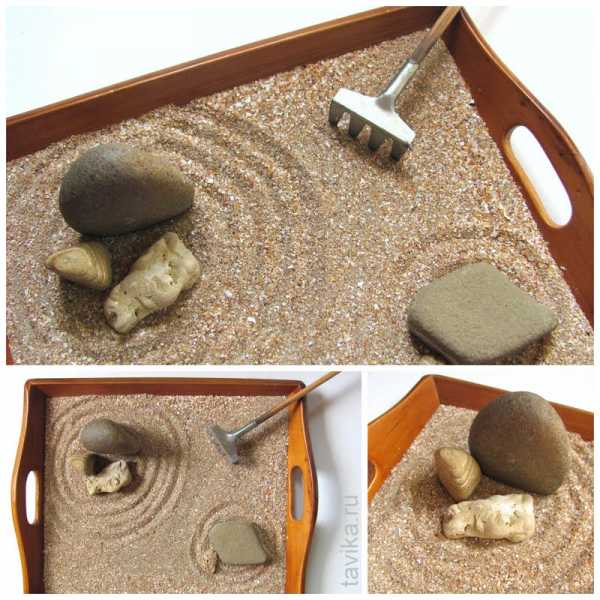 |
| Japanese kindergarten "Circles on the water" |
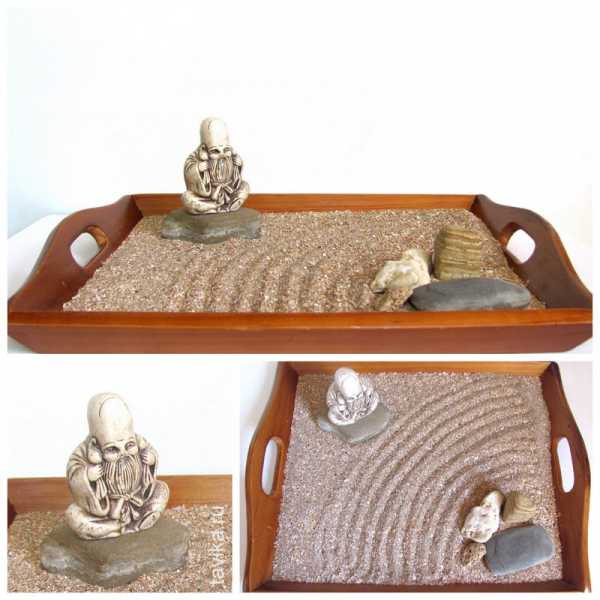 |
| Japanese kindergarten "Fukurokuju" |
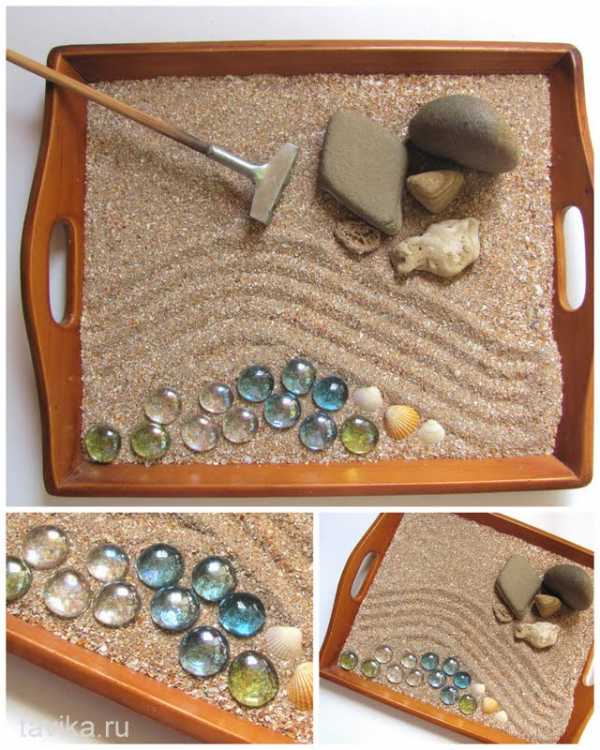 |
| Japanese kindergarten "Wave" |
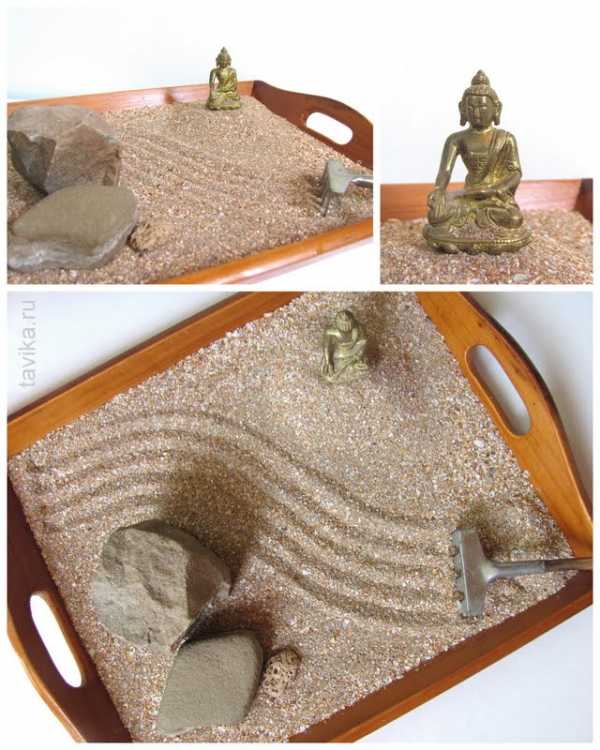 Japanese garden "Buddha"
Japanese garden "Buddha"
 |
| Japanese garden "Pink Egg" |
And the next two kindergartens are not entirely in the Zen tradition, but I also really like them. In the composition of the first, I used not only sand and stones, which, among other things, in such gardens symbolize eternity and the never-ending flow of time, but also a man-made and quite modern object - a model of a ship. For me, this tiny model (only 10 cm long and 3 in height) is also very symbolic - after all, my husband made it when he was the same age as my son is now. Therefore, the fact that my children play with toys made by their parents in childhood also means for me the continuity of generations and the circular flow of time.
 |
| Installation of stones and sand "Ocean" |
But this kindergarten is a model of the Universe created by Katya. Although it is not made quite according to the canon and there is a lot of superfluous, colorful and chaotic in it, apparently this is the inner world of a child.In any case, the arrangement of a Japanese kindergarten is useful for children - working with sand and stones teaches them to concentrate, instills an aesthetic taste , has a therapeutic effect, and at the same time develops fine motor skills
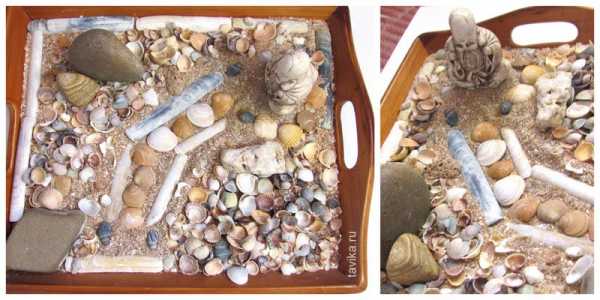 |
| Japanese garden Kati |
We have already created a variety of mini-kindergartens many times, you can see them here:
And also crafts, games and activities using sand here: Drawing with sand and on sand, Water filter, Hourglass, Sand sculptures, "Why is sand different?"
Landscaping filler process

Consider an example of planting a lion-shaped topiary:
- The first to be planted is the "lion's skin", which is planted with flowers;
- "Mane" - add lawn grass, which is decorated with long stems;
- Small figure details. Tail, ears, paws, muzzle;
- Depressions are made in the soil with a sharp object, sending seeds or already rooted plants into them;
- Fill up holes and cover with moss;
- It is advisable to install supports for each figure so that the structure does not collapse;
- Watering can be done either manually using a watering can or a special irrigation irrigation system can be carried out.
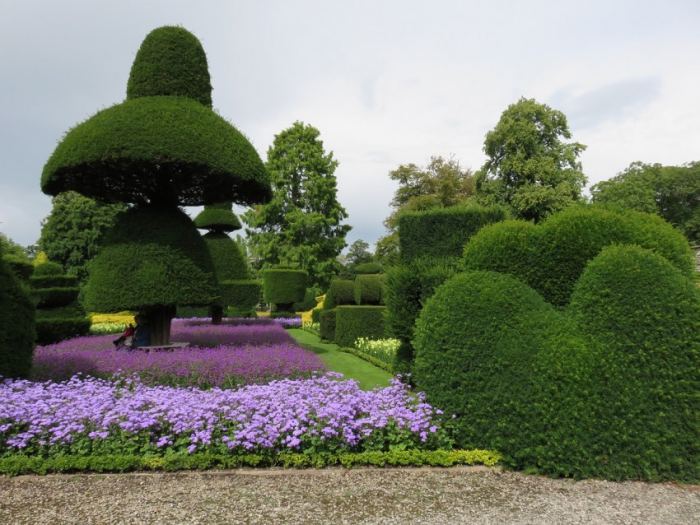
The process of choosing plants, various planting schemes - gives a wide flight for your imagination in the manufacture of topiary. But do not forget that summer is not all year round, and in winter everything can die if you do not take care of insulation. It will take a lot of effort and time to master this skill, but the result is worth it.
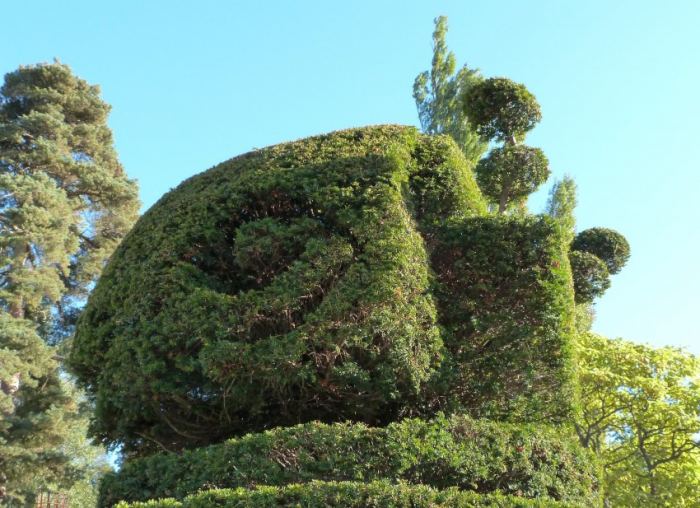
Country of the Rising Sun Style
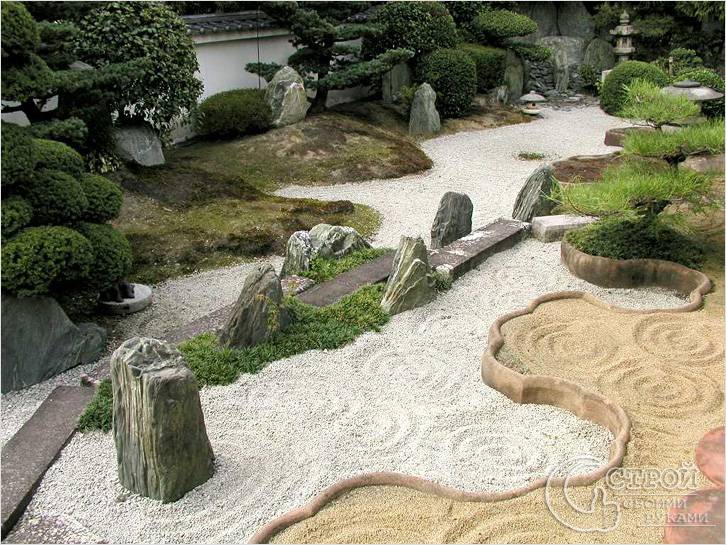 Garden in the best Japanese traditions
Garden in the best Japanese traditions
It is worth noting that among the Japanese exclusively special masters are engaged in stone gardens, however, for Europeans, most often a stone garden is a decorative element, and not part of a religious cult, therefore almost everyone can make it. So, let's begin. You will need large, naturally shaped stones, large boulders or pebbles, rubble, sand and small pebbles.
The main elements of a Japanese-style garden are stones and water. But this does not mean that it is possible to arrange a pond of the correct geometric shape on the site. Why? Yes, simply because you will not find this in nature. And the style of the Land of the Rising Sun is closely related to natural harmony. Be attentive to all the little things! You can't pile up space, but you shouldn't leave it soulless either. Remember, the main thing is symmetry and harmony.
Preparatory process, site arrangement. First, remove the soil to a depth of about 10 centimeters. Remove roots and weeds from the area. Fence off the area with rope that you need to pull over the pegs.
 Arrangement of the territory
Arrangement of the territory
Cover the bottom of the plot with agrofibre under the rock garden. Now fill in a layer of pebbles, sand or gravel. Place a border around the edge of the stone garden. Then intuitively position on prepared surface large stones. The main task is to create a harmonious composition. Around the stones, you can depict streaks that would resemble circles of water. Plants may be present in a Japanese stone garden, but should be limited.
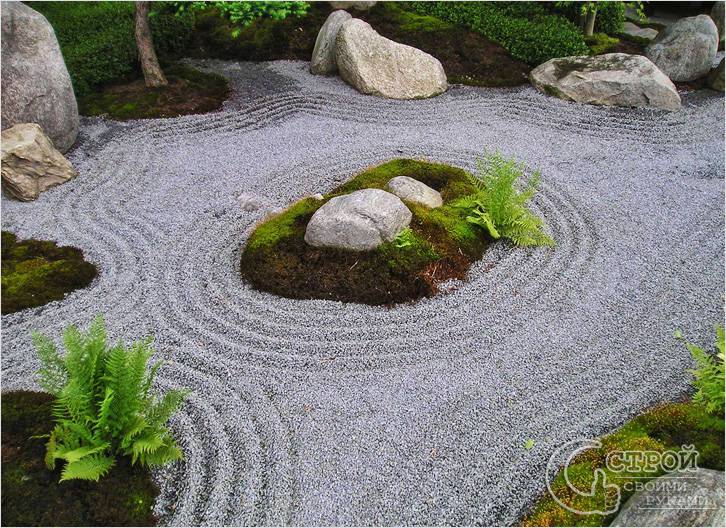 The grooves represent water
The grooves represent water
A rock garden should be thought provoking. Perhaps this is where you can make important life decisions. Stones in garden landscaping will help create a truly picturesque corner.
What elements does it consist of
The set of elements for a table garden variety depends on individual preferences and requirements for the final result and appearance.
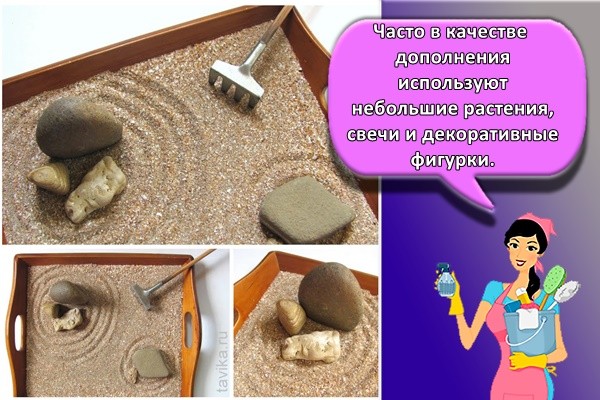
As a rule, for the construction they use:
- small stones;
- sand or gravel;
- pebbles;
- moss.
The final list of components is not limited by anything. Depending on the creative idea and the scale of the idea, you can use any additional elements that can decorate the composition and add a certain charm to it. Small plants, candles and decorative figurines are often used as an addition.
Each of the building blocks used to create Japanese jewelry has its own meaning. Sand symbolizes the energy of time and a large number of opportunities that are provided to each of us by the world. The imitation of waves in the sand serves as a symbol of water, which attracts material wealth into the house. The symbolic meanings of the stones are constancy and serenity. If plants are used in Karesansuye, then they express the emotional and sensory components.
Thanks to its symbolism and originality, the compact Zen garden has become one of the most popular home furnishings that promote relaxation and create a harmonious environment. The characteristic features of the Japanese composition are simplicity, minimalism and balance.
Boulder making process using wire frame
With your own hands, you need to create a stone frame from wire, fill it with bags, foam, newspapers, cardboard (which you can find at hand) and fix the structure with cement mortar. The frame can be round, oblong, vertical - whatever you want.
The first layer of concrete must dry out, after which the future boulder is coated with a more liquid solution. This can be done with your hands or with a spatula. At this stage, depressions, bulges are formed that imitate natural stone.Then the workpiece is covered with plastic wrap and allowed to harden. Then the artificial boulder is turned over and the bottom is formed.
Finally, after complete drying, a sealant is applied to protect against adverse environmental conditions.
In the video, manufacturing technology using a garbage bag:
Making a hollow boulder stone
A hollow stone with a void inside is created like the previous option. A cardboard frame of the desired shape is covered with a construction mesh and covered with a thick cement composition. The walls must be more than 2 cm, otherwise the decorative element will be fragile.
The workpiece is covered with foil and left to dry for at least a day. After hardening, you can paint with pigment or concrete paint. When everything is dry, the result is fixed with a sealant. The last step is to take out the cardboard. The hollow boulder for the garden is ready.
Making an empty inside cobblestone:
2> What is a rock garden and why is it needed
The rock garden, as a heritage of the East, carries a deep meaning. In Japan, an element of inanimate nature has long been a subject of worship, endowed with energy that gives calmness and serenity.
Initially, stone compositions were located only at monasteries and temples, where each element had its own meaning:
- pebbles (sand) were a symbol of water;
- horizontally lying boulders denoted islands and mountains, and vertically standing boulders denoted the sky;
- plants and moss were singled out as a prototype of the land covered with forests.
Attention! In Japan, the reconstruction of the rock garden is entrusted to specially trained craftsmen.
Today, a stone mini-garden is a way to decorate the landscape design of a summer cottage or a personal plot. But the Japanese believe that such a composition allows you to achieve harmony, helps to cope with the daily hustle and bustle.
A traditional rock garden is a plain, the main part of which is covered with gravel or sand, with boulders of various sizes distributed on it. At first glance, their arrangement may seem messy, but each of them has its own place.
When composing a composition from cobblestones, there are rules, for example, stones in a group must be placed in 3 pieces, symbolizing the triad from Buddhist philosophy. On the basis of pebbles (sand), furrows parallel to each other are made along one side of the garden and around the stones. Thus, the pebble surface symbolizes the ocean, and the boulders themselves are islands.
In addition to a certain arrangement of boulders in a group, the Japanese have another tradition - to lay out sacred representatives of the animal world from stones. List of which the stork follows, as a symbol of the heights of those who obey by man, as well as turtles - denoting a long life.
Important! One of the features of the Japanese rock garden is that in whatever direction a person is standing, his gaze always falls on an equal number of stones.
Examples of ready-made solutions
Those who wish to equip a beautiful garden of stones on a summer cottage or personal plot should pay attention to the famous examples. The rock garden of the Reanji Temple, created in Kyoto in the XIV-XVI centuries, is presented in the form of a rectangular area, densely filled with gravel
On the surface there is an imitation of waves and fifteen stones are placed, divided into five groups.
The rock garden of the Reanji Temple, created in Kyoto in the XIV-XVI centuries, is presented in the form of a rectangular area, densely filled with gravel. The surface depicts an imitation of waves and contains fifteen stones, divided into five groups.
Zen Garden on the outskirts of the Czech spa town of Karlovy Vary was created in 1998. The composition in the form of a circle divided by a line in the middle was the work of the architect Kinji Nomura. White gravel symbolizes the ocean. One stone is made in the shape of a ship. In the central part of the composition there is a lantern symbolizing light and help to those who have lost their way.
Share link:
Additional tips and tricks
When making a Japanese desktop garden, it is worth considering a number of additional recommendations. Simple tips will help you avoid common mistakes, make a beautiful composition and get the most out of the creative process:
- You can diversify the composition of stones with the help of a small number of plants, which are optimal for succulents. Such plants do not need special temperature conditions and frequent watering, therefore, they retain their proper appearance for a long period.
- You can use a decorative tabletop garden to decorate any space, including a workplace and a recreation area. Karesansui will look appropriate in the study, bedroom, living room.
- When creating a composition, you should adhere to the principle of minimalism. The basic philosophy of the Japanese garden is to discover true beauty by mentally complementing the incomplete.
- In the interior of an apartment or office, you can combine a stone composition with other decorative elements. The classic option is a combination with live plants. You can also complement the garden with a small candle, which will add even more peace and tranquility.
Following simple guidelines will help you easily make a decorative table garden in accordance with Japanese traditions and philosophical principles of Zen Buddhism. The correct approach to the creation of Karesansuya will help to make a symbol for contemplation, relaxation, observation and simultaneous activation of the work of consciousness.
p> Share link:
Stylish gardens
When creating a composition, a design style is pre-selected. There are many such styles. For a harmonious perception of a garden in a pot, you need to clearly adhere to a certain style orientation.
English finesse
A miniature garden in the English style suggests proximity to the natural landscape with hills and ponds. From a house or a castle entwined with plants, there are paths made of stones. Mandatory elements are garden benches made of wood, arches, fountains. All this can be made by hand using planks, wire, polymer clay.
Japanese spirituality
The composition in the Japanese style is characterized by an asymmetrical arrangement of individual elements - a house, a gazebo, a tall tree. Plants, large stones and water are the philosophical basis of the Japanese garden. The use of mosses would be appropriate. Wooden bridges, gazebos, lanterns and houses with flat roofs, picket fences, fences are easy to make from available tools - planks, toothpicks. Restrained colors of plants and decor are welcome.
Rustic country style
Simple things for decor are required here. Preference is given to rough wooden benches, wells, clay dishes, wheelbarrows, watering cans, stairs, wicker baskets - all the attributes of a discreet rural life. Figures of domestic animals - horses, goats, chickens, geese will complement the picture.
French charm
The alley in the center of the composition with green lawns and parterres of plants is distinguished by the French style. Graceful garden benches, arches, sculptures and a fountain add sophistication. They can be handmade. A table with tea accessories under the crowns of plants will bring home comfort and lightness.
Shabby Chic - Aged Beauty
Attractive style with white objects, deliberately aged, forms an unusual space in the pot. Among the plants are light benches, small architectural forms, frayed arches, a house of the same type, a round table with a lace tablecloth. Here's what you need to decorate.
Taste of the Wild West
This is where cacti and succulents come in. Recreating the Wild West in a pot is a tempting idea. It's easy to make it happen. We need a wooden house, a stable, a picket fence, benches. Everything is made from planks, twigs, toothpicks. Clay dishes and figurines of horses, harness.
Garden decor photo

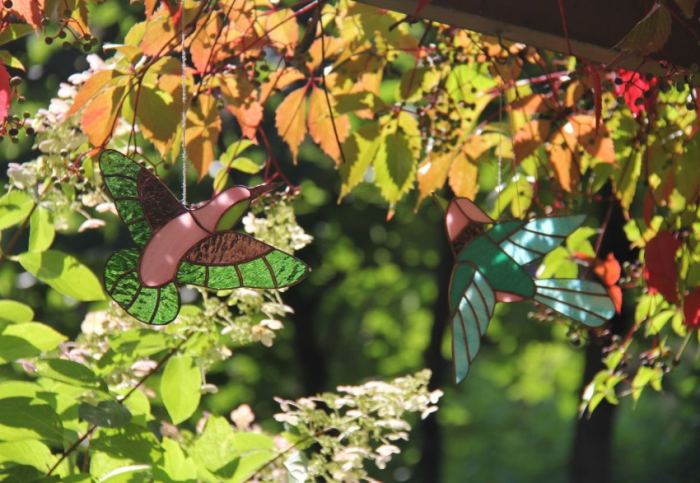
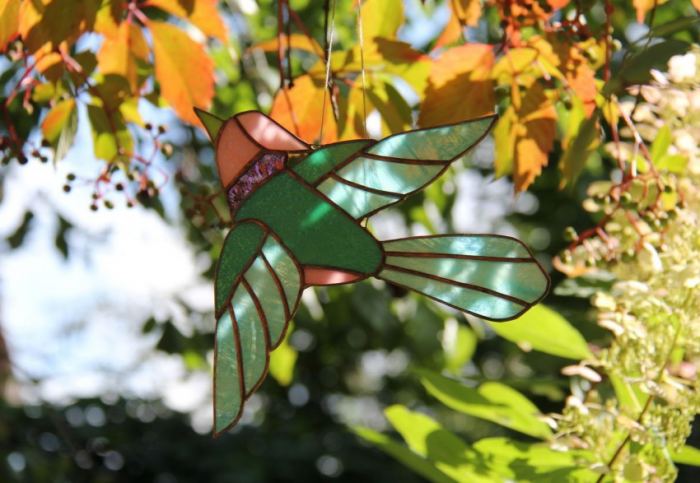

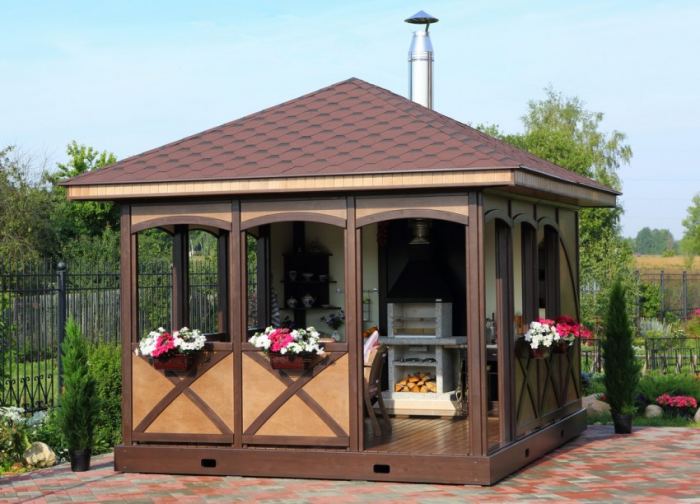
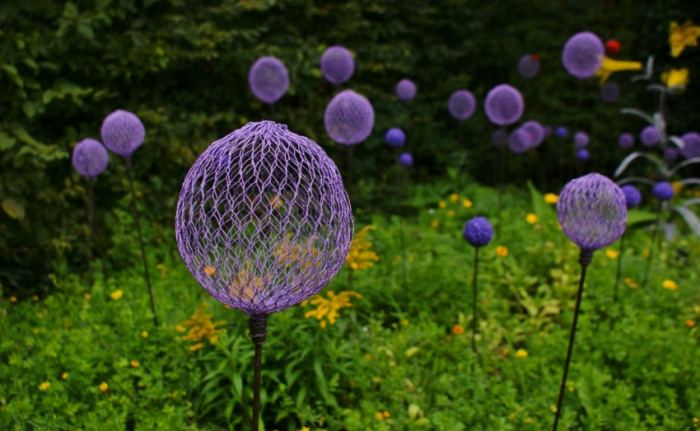
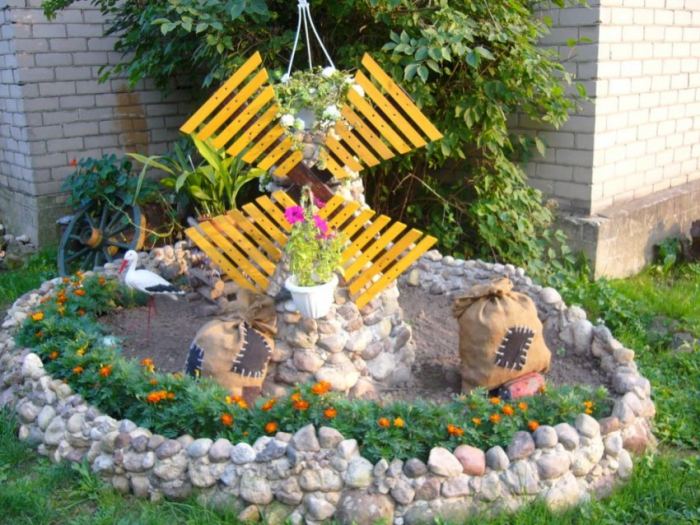
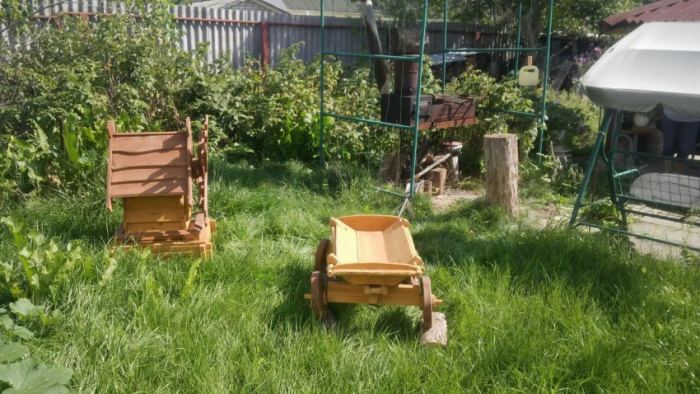

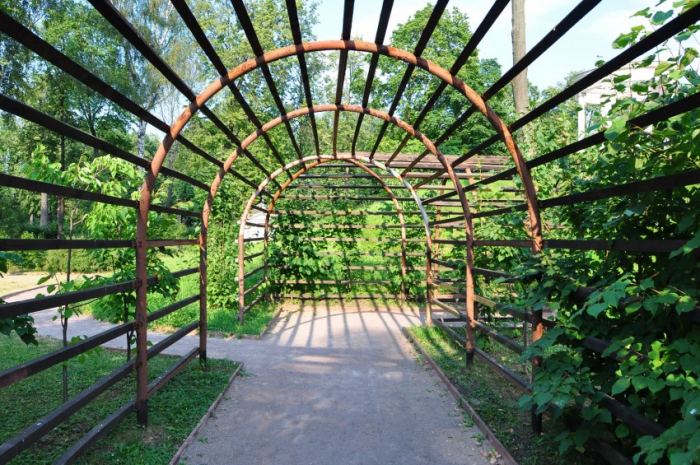
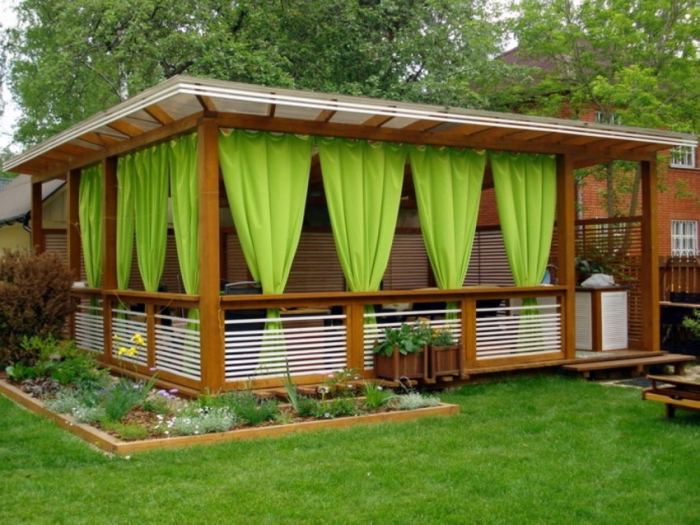
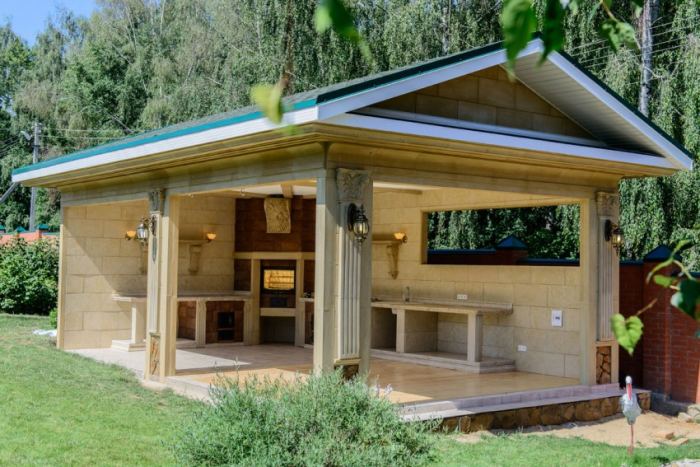
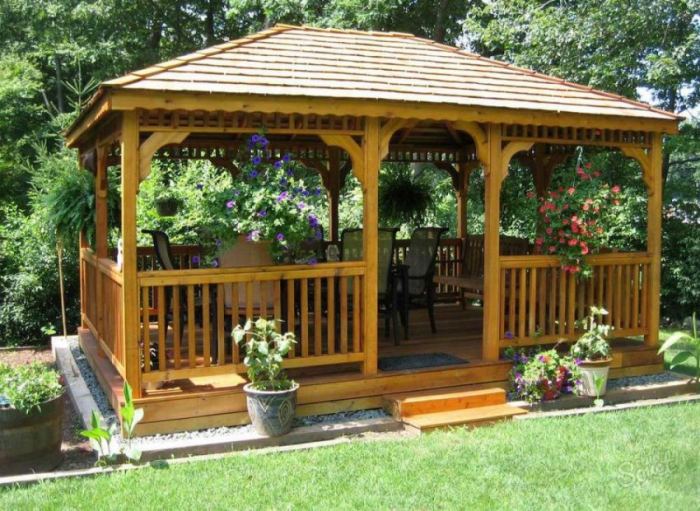

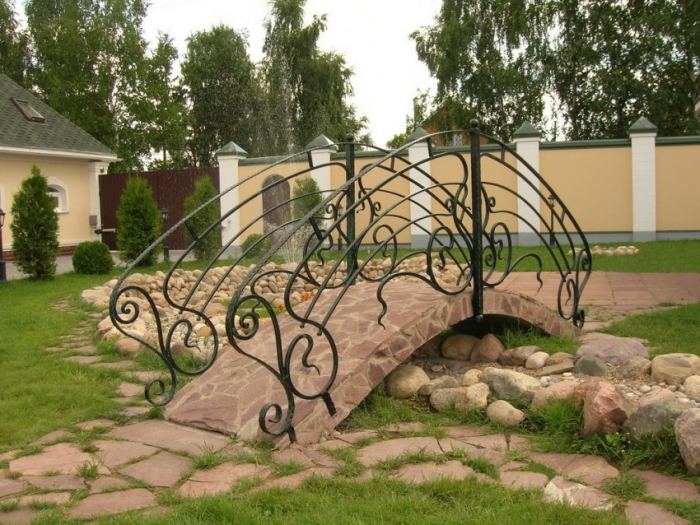

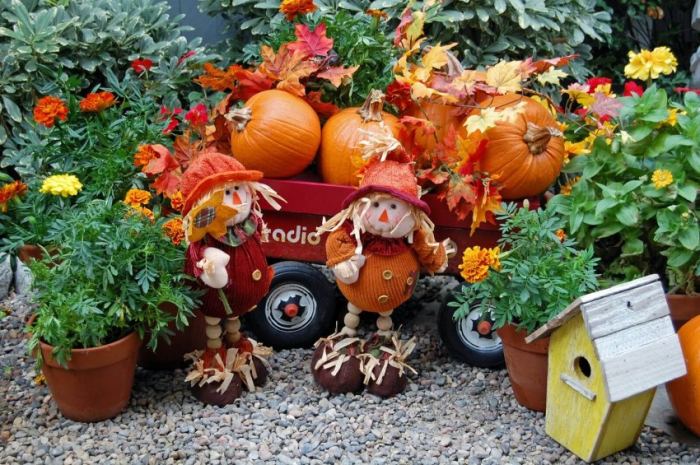
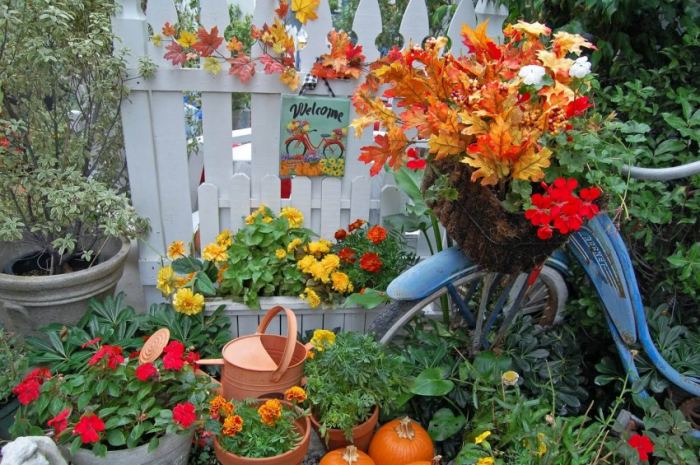
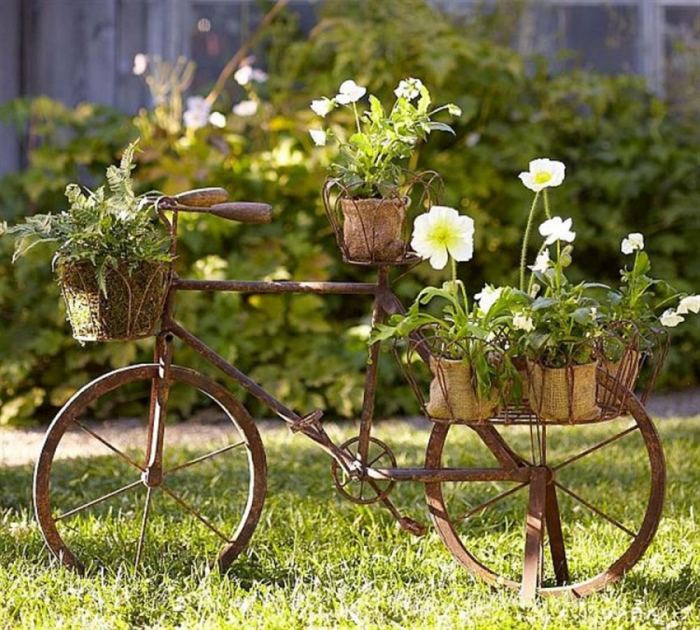
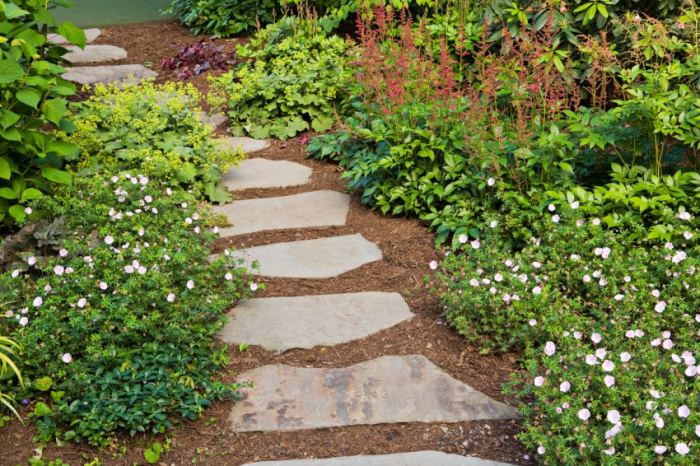
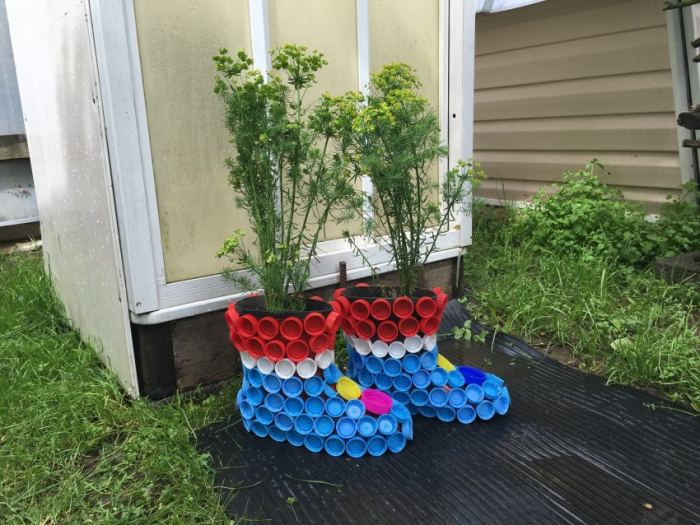
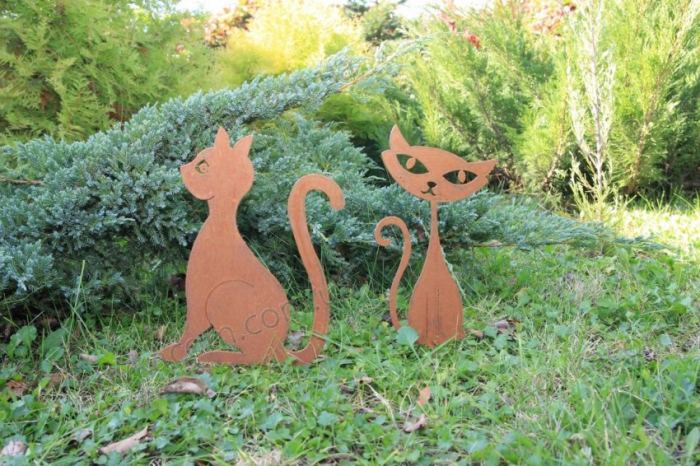



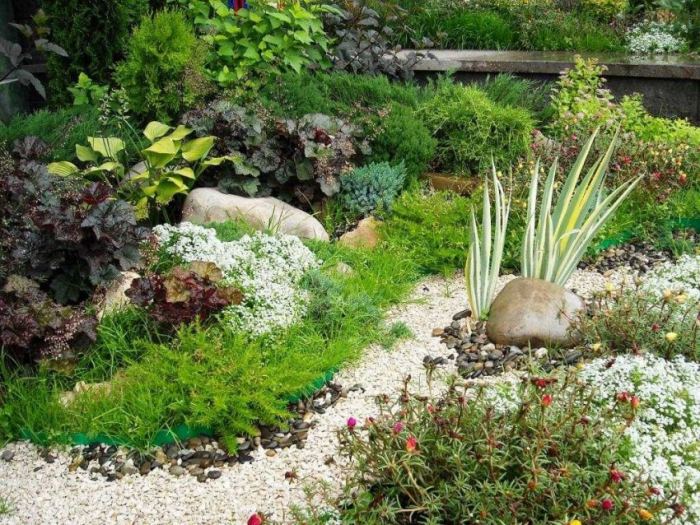
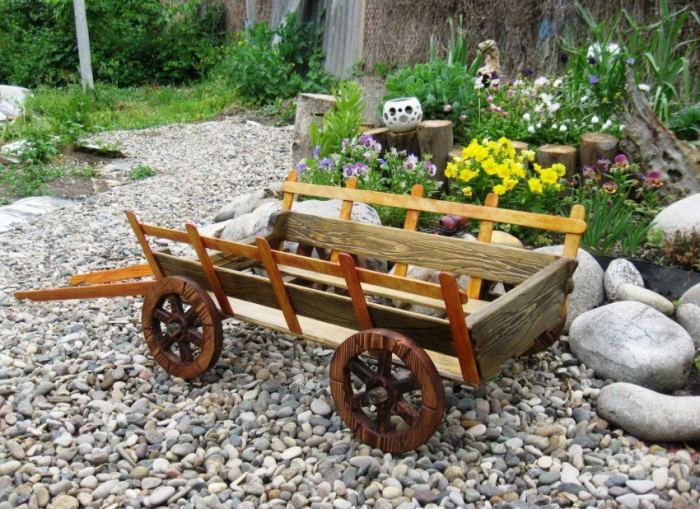
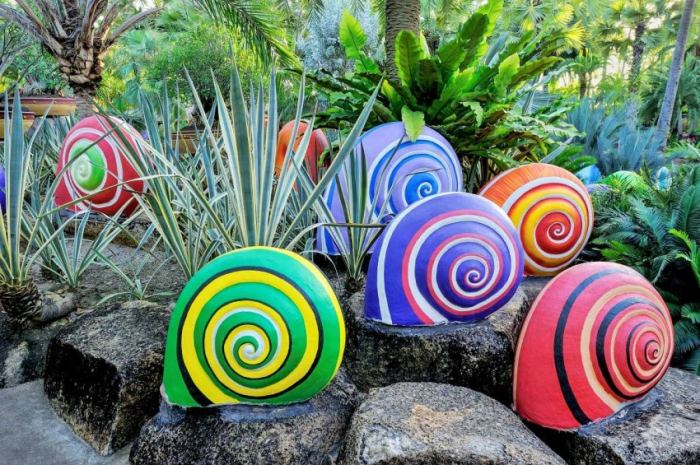
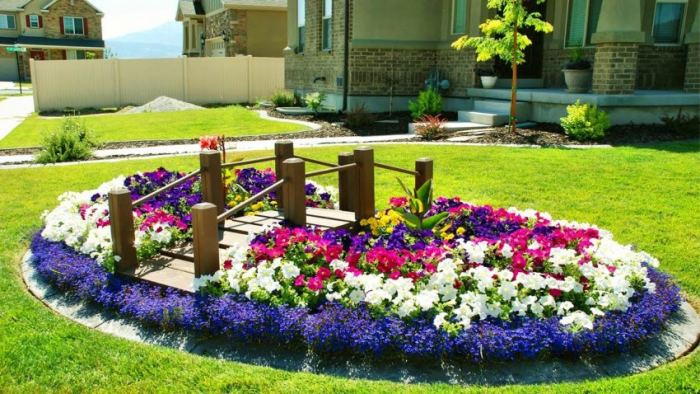
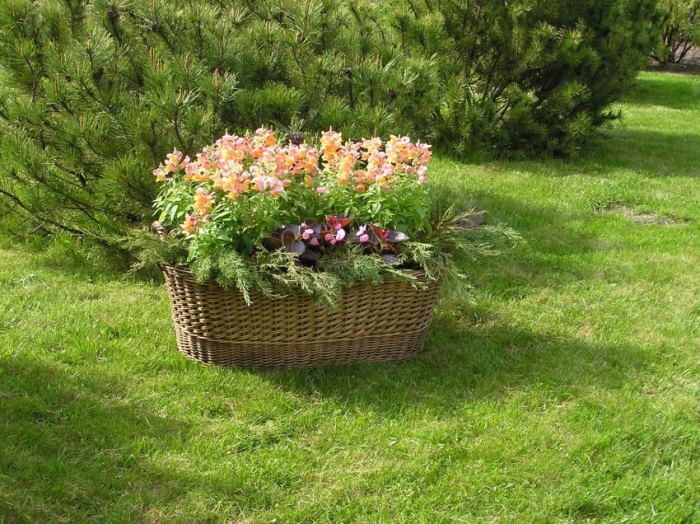
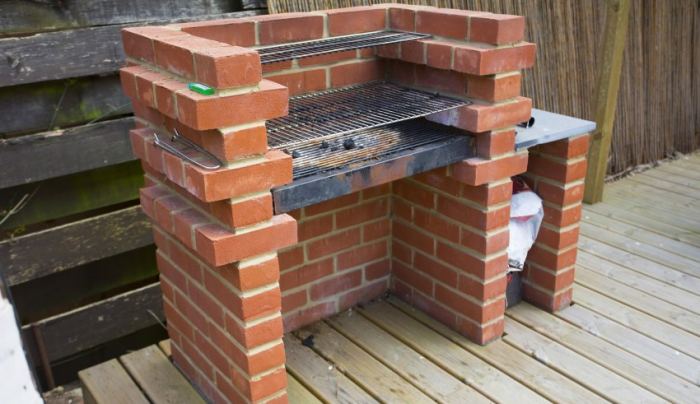
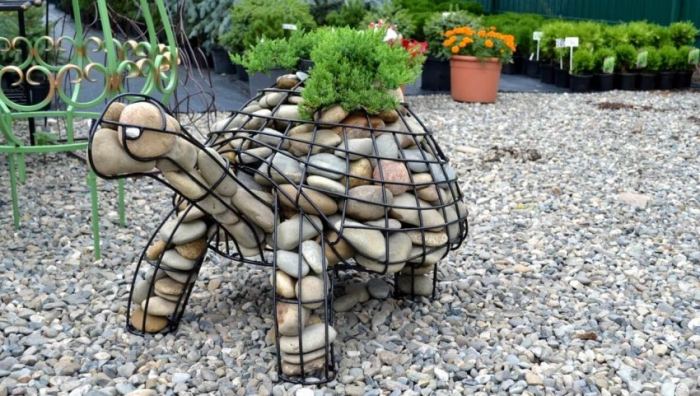
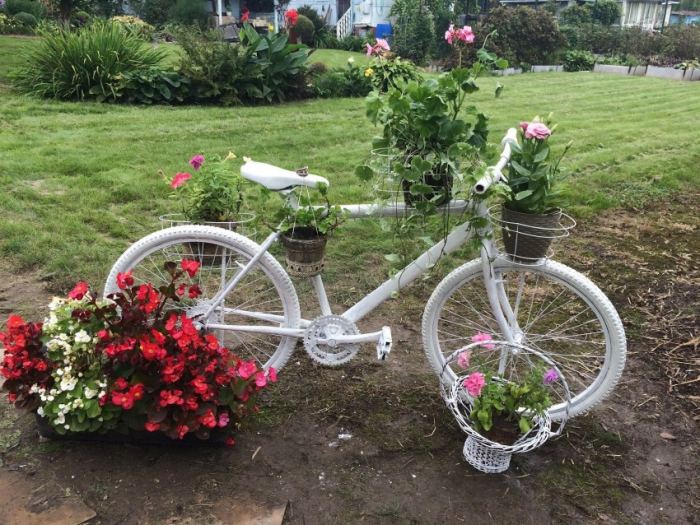
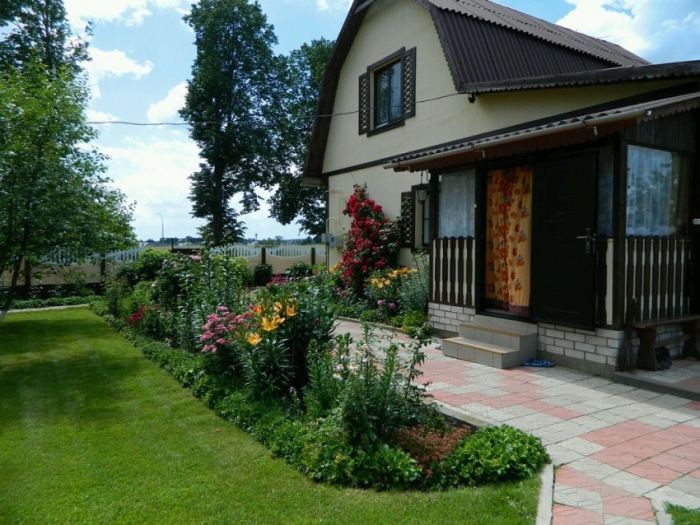
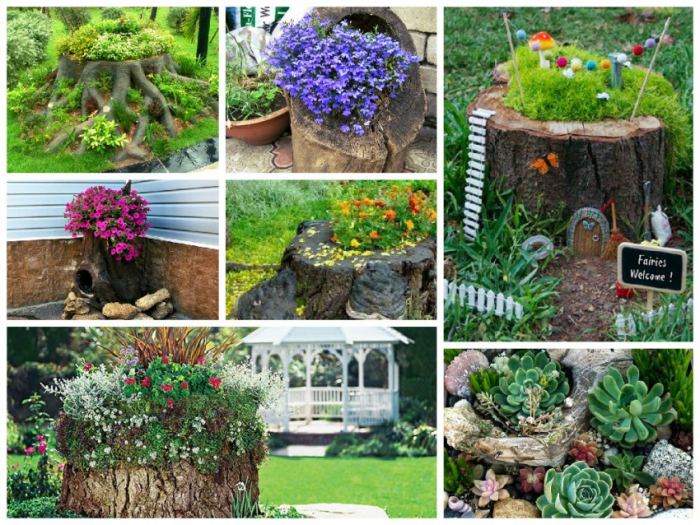

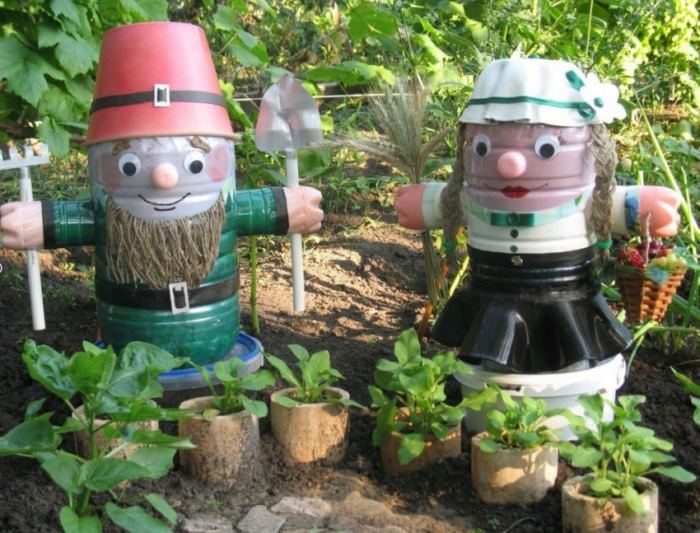
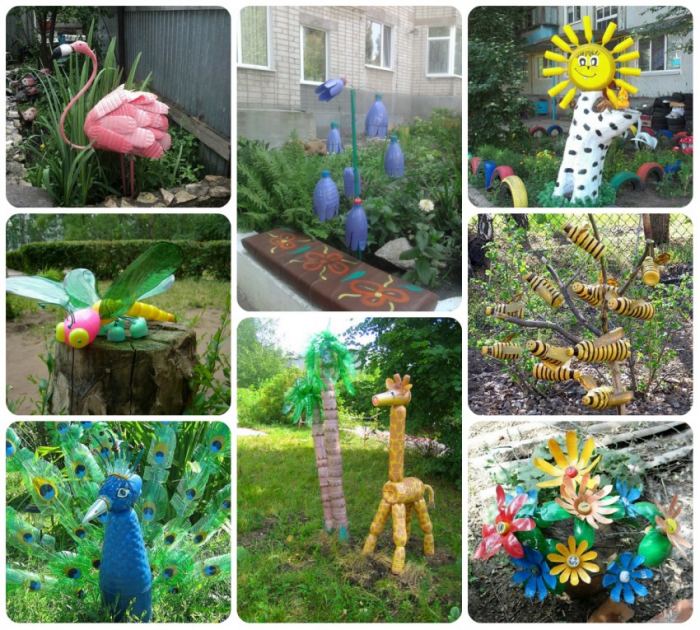

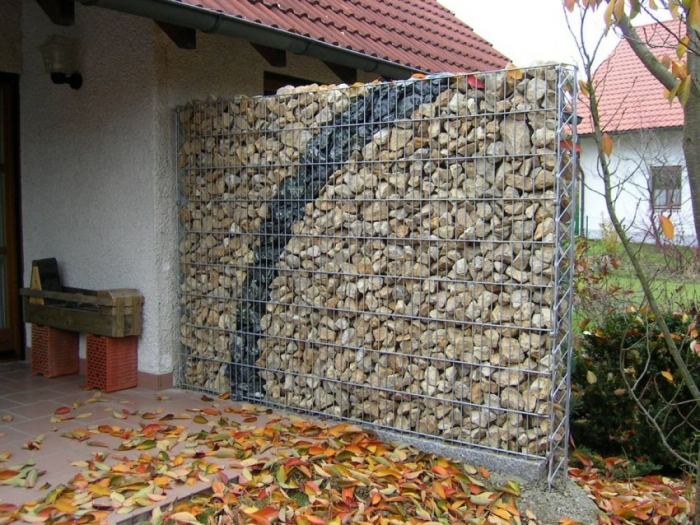
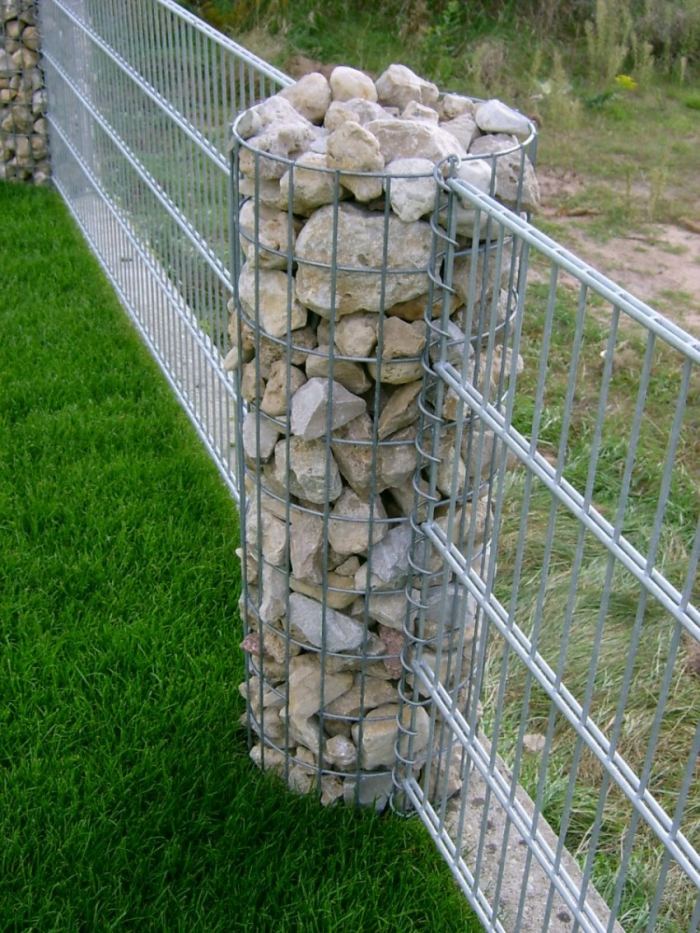
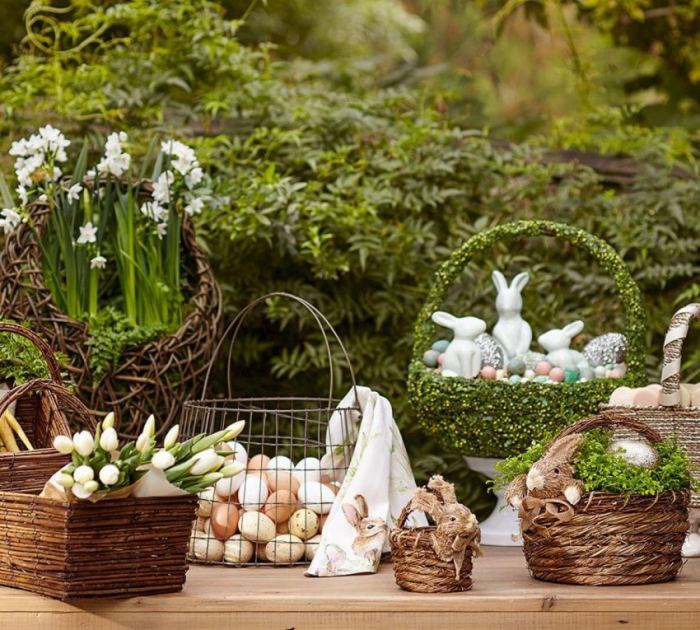

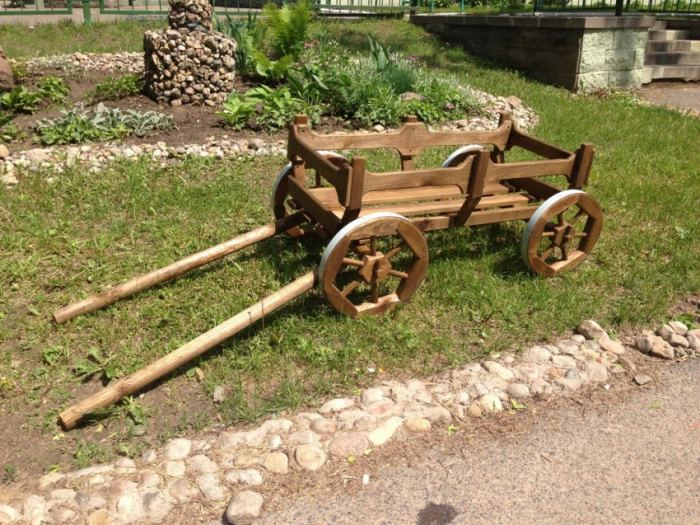
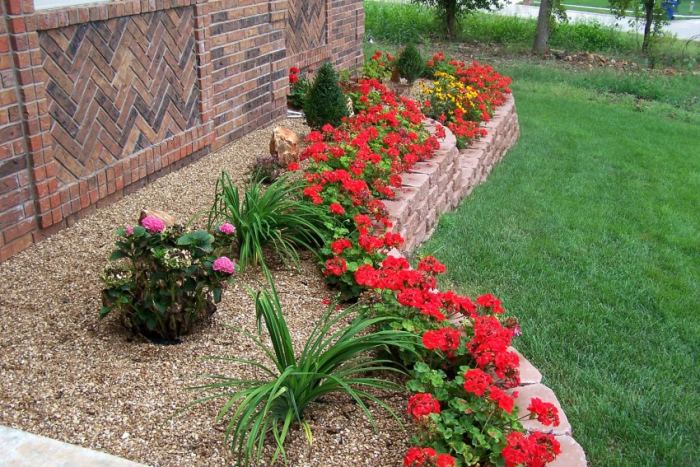

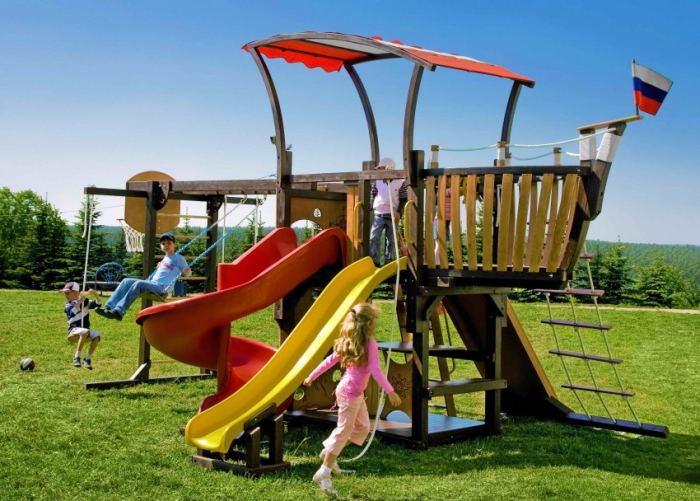
We also recommend viewing:
- Garden fountains for summer cottages
- DIY decorative flower beds
- How to make a scarecrow for the garden
- Roof vane
- Decorative bridge for summer cottages
- DIY garden fencing
- Colored decorative chips
- How to make a bench with your own hands
- Crafts for giving
- Garden stones
- How to make a mailbox with your own hands
- Bird feeders
- DIY tire crafts
- Crafts from plastic bottles with your own hands
- DIY plastic bottle flower bed
- How to make a planter for the garden
- Decorative border
- How to make a sun lounger with your own hands
- DIY hammock
- Dry stream with your own hands
- Do-it-yourself pond in the country
- House for a well with your own hands
- Country washbasin with your own hands
- How to make a brick flower bed with your own hands
- How to make a waterfall on the site
- Sculptures for the garden
- DIY children's slide
- DIY sandbox
- Decorative gnomes on the site
- Washbasin for giving
- DIY decorative fence
- How to breed fish in a pond
- DIY nest of branches
- DIY figurines for the garden
- DIY garden swing
- Children's swing for home
- Illumination of the facade of a country house
- Garden Decorations
- Contemporary garden furniture
Application
Topiary brings order and a sense of serenity to gardens, and is used in the design of the classic approach. It is recommended to apply symmetrically, as they form perfect lines in the frame of the garden.
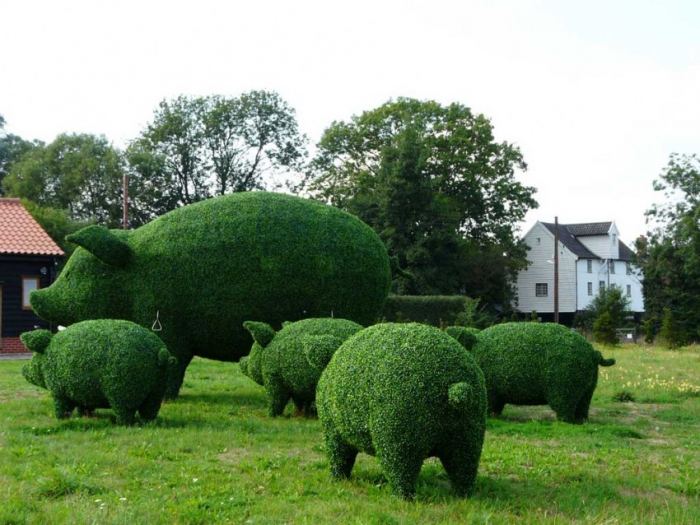
If you want the instruction to please you in winter, then choose evergreens for landscaping. Green topiary figures, framed by a snow cap, transform your yard into a fabulous landscape.
Planting plants is allowed not only in open ground, but also in large containers and pots. But only certain plants are suitable for this, for example:
- thuja bushes;
- boxwood.
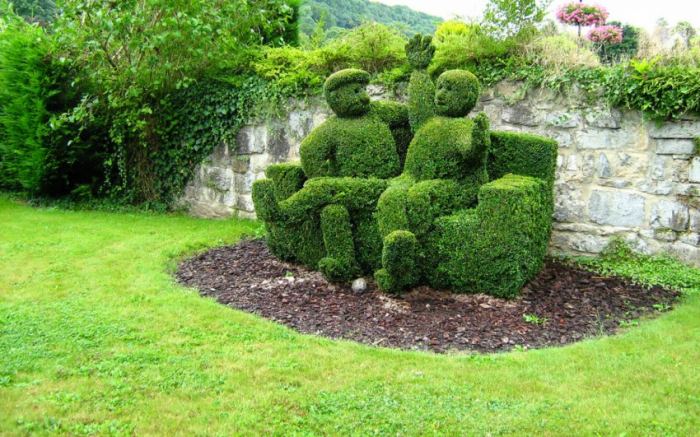
They allow you to form the perfect contour of the figure, for example, a ball or a cone.

How to Create a Miniature Zen Meditation Garden
I had an interesting project, not a chest or a box, but a miniature Zen garden, or as it is also called - a Japanese desktop garden for meditation and contemplation. There are many names, but the essence is the same. The customer asked for a large size 50 * 80 cm. I suggest you see how I did it.
A bit of theory
Homemade miniature Zen gardens have become one of the popular and affordable means of promoting relaxation.
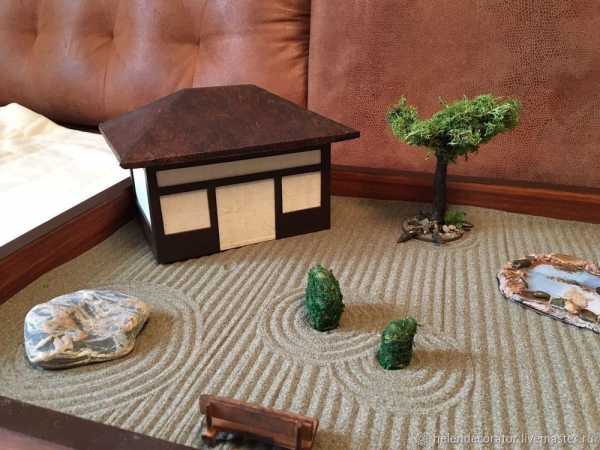
The term "Zen" means "to come in contemplation." Its purpose is to give you “feel the moment”, freeing you from all life's hardships and suffering. Zen is said to be the quintessence of Buddhism. It symbolizes inspiration and serenity, and is able to instill in you a sense of grandeur and balance through contemplation.
The Japanese have been using Zen miniature gardens at home for centuries. For them, it is a tool for meditation and spiritual growth.

The Japanese desktop garden consists of a small "tray" with stones, sand, miniature rakes and decorative elements. Sometimes it is complemented by small houseplants, miniature gazebos, buildings and mini-temples. A distinctive feature is minimalism, simplicity, harmony and balance.
Everyone does, as he thinks, necessary for his imagination and his capabilities.
The sand used in the design symbolizes water, which attracts money, and the rake creates waves. The stones symbolize serenity and constancy.
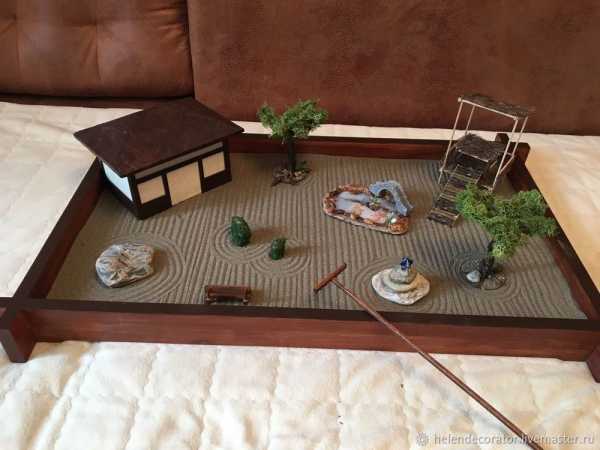
The composition of the stones should be asymmetrical, reflecting the naturalness of the natural landscape. They are used in groups of three, with one large and two smaller ones on the sides. In general, it all depends on your imagination. In a corner of the landscape, you can put a small candle to help you relax.
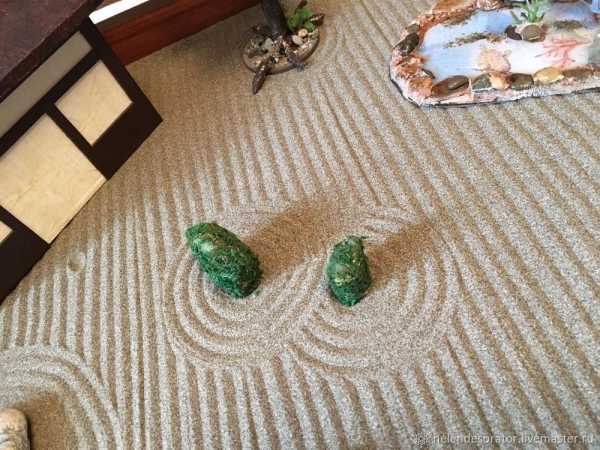
You can plant plants in mini pots and install in the garden, in the general sea of fantasy.
We will need:
- Plywood for the house, the size of the house is 20 * 13, but you can make any.
- Furniture board or all the same plywood - for the garden pallet itself.
- Sticks, skewers, wooden rulers, slats, toothpicks can be used.
PVA glue joiner.
Rice paper or banana paper, mulberry white, brown for the roof, but you can also paint white brown.
Primer and paints - brown and white.
Epoxy resin and textured paste.
Moss and sisal.
Decorative miniature items.
Stones and sand.
Expanded polystyrene or foam for the roof.
Acrylic lacquer.
Any wire for a tree frame and any teip tape.
Work process:
1. First, we glue the frame of the house from plywood and made the very base for the garden from 18 mm furniture board. The frame of the house was painted with soil.

2. We glue the body of the house with white rice paper, cover with varnish. Saw to fit the slats. The house had to be made in an oriental style.
3. We paint the slats brown and glue them to the body of the house. We cover with varnish.
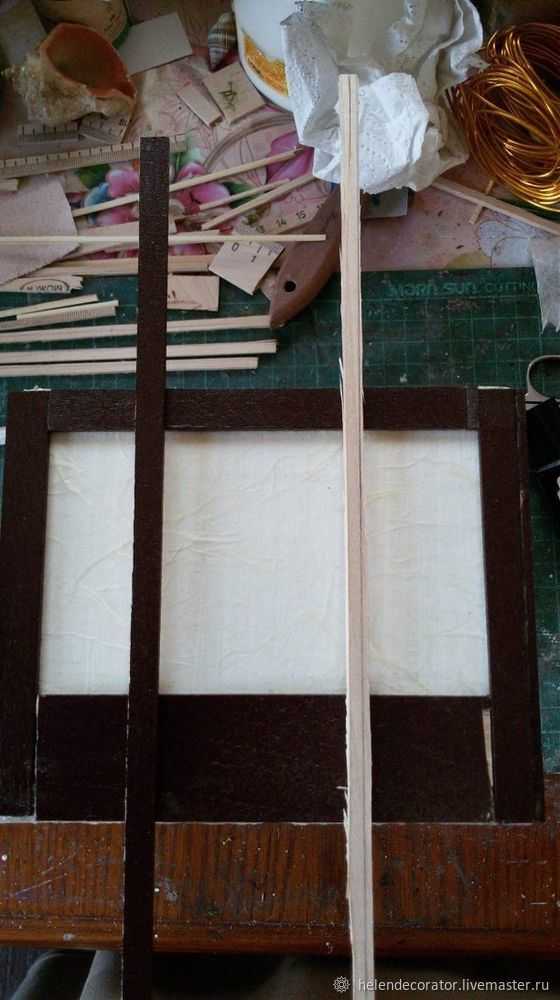
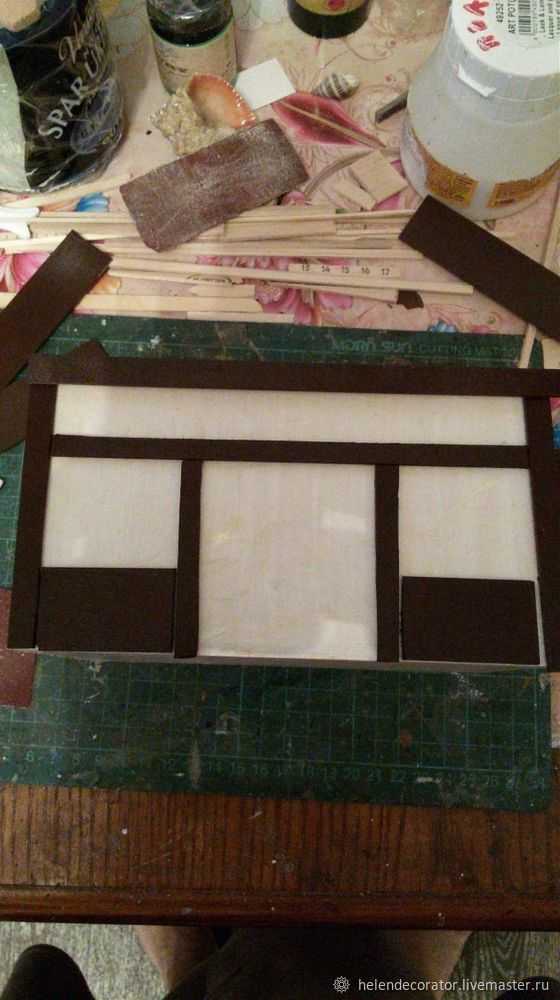
4. Cut the roof out of expanded polystyrene and it must be well sanded. 5. We glue it with white or brown rice paper, cover it with acrylic varnish.
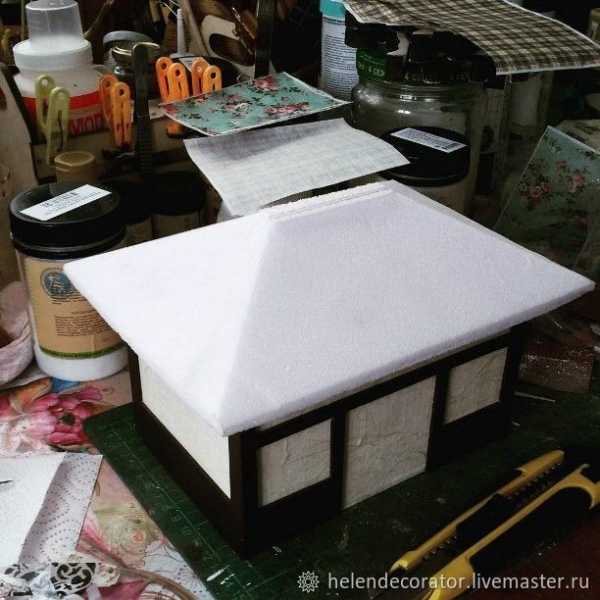
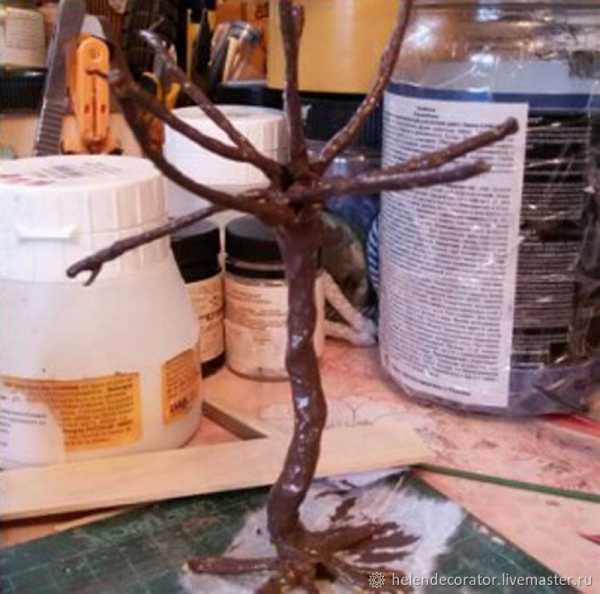
6. In the photo next to the house there is a tree frame. The tree was made of wire, wrapped with tape, painted brown. Then she glued the moss to simulate the crown of trees. 7. The pond was made of stones, paste with sand and epoxy resin. Lay stones on the plywood base using any putty or texture paste. You can glue the image to the bottom first. When everything is dry and hardened, fill it with epoxy resin and wait for it to dry according to the instructions.
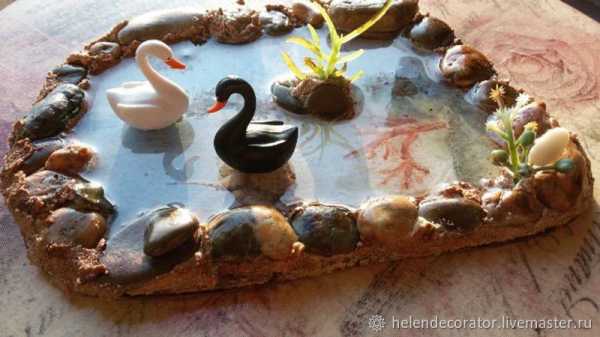
8. Made a frame for a gazebo and a bridge. from skewers, twigs, sisal.
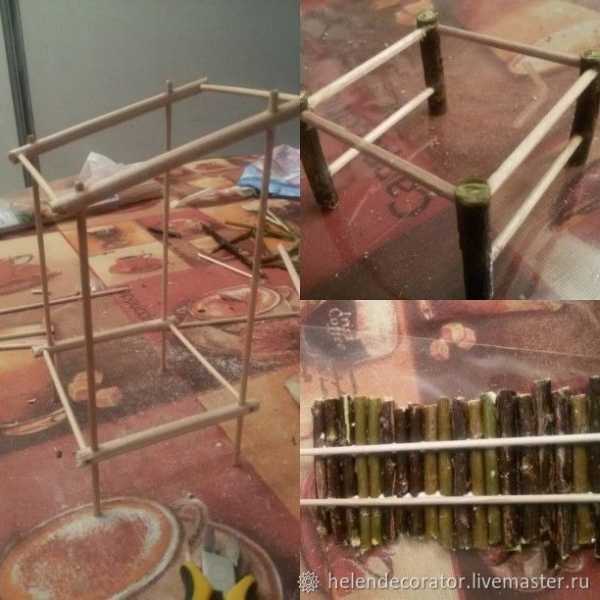
9. For the photo session, I used ordinary, sea sand, for a Zen garden, white, quartz is recommended. The customer sent me a photo with white sand, the garden is perceived completely differently.
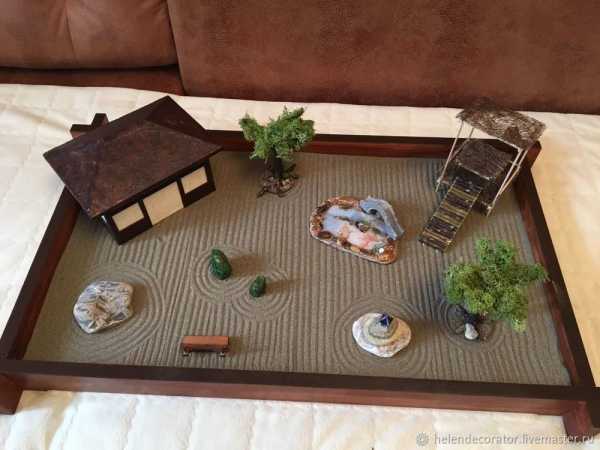
And the most interesting thing is to arrange and photograph everything!

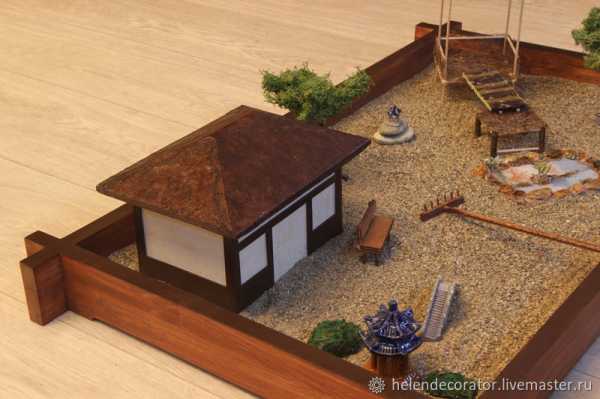

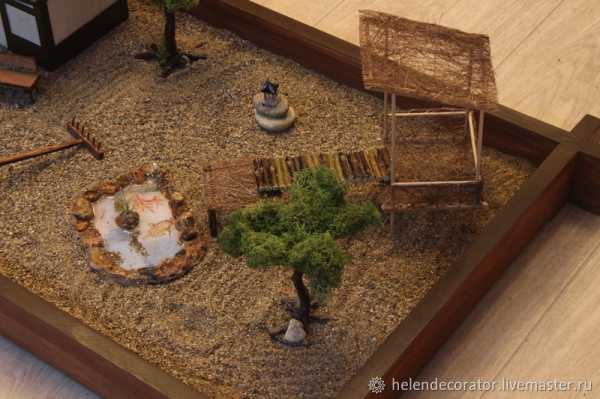
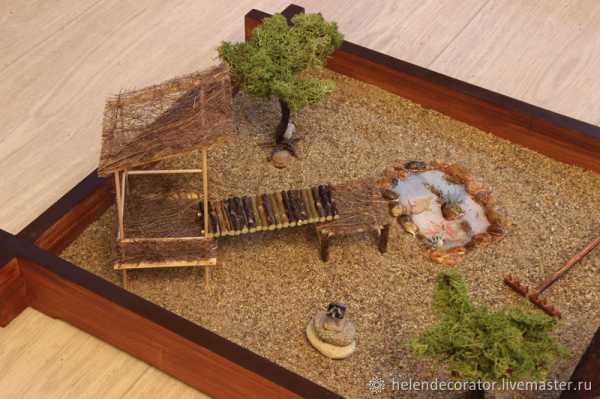
Thank you for the attention!
Japanese rock gardens - Craftsmen's Fair
What is a Japanese rock garden? Many have heard, a few lucky ones have seen with their own eyes, and someone does not even know what it is ...
So, as Wikipedia reports, the rock garden literally translates from Japanese as "dry mountains and waters" and is a cultural and aesthetic structure that appeared in the medieval period of Japanese history, which is called Muromachi (1336-1573).
The Japanese rock garden is one of the most mysterious phenomena for Europeans. Perhaps, nothing like this has arisen in any world culture. Such gardens are also called "dry" or "philosophical".
As a rule, stone gardens were created at temples or monasteries and were intended only for contemplation. The space in which such a garden was located seemed to be artificially closed. And in it, as in a kind of microcosm, the elements of nature were grouped - mosses and stones, sand and sea pebbles. The main principle that must be observed when creating a rock garden is uniqueness, each point of view must significantly change the mini-landscape.
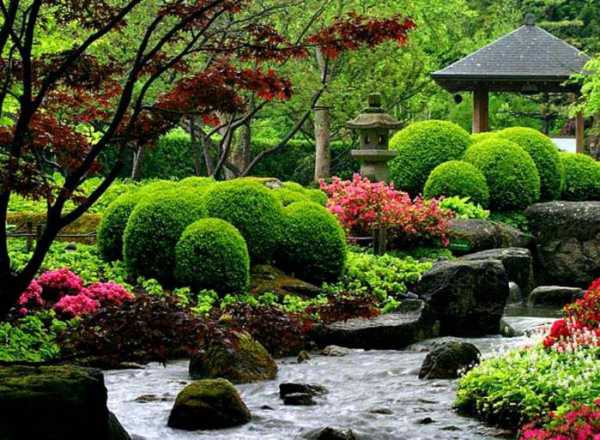
The most famous garden in the world, included in the UNESCO treasury, one in which there are no trees and shrubs at all. This is the famous Fifteen Stone Garden of Ryoanji Monastery in Kyoto, created in the 16th-17th centuries.

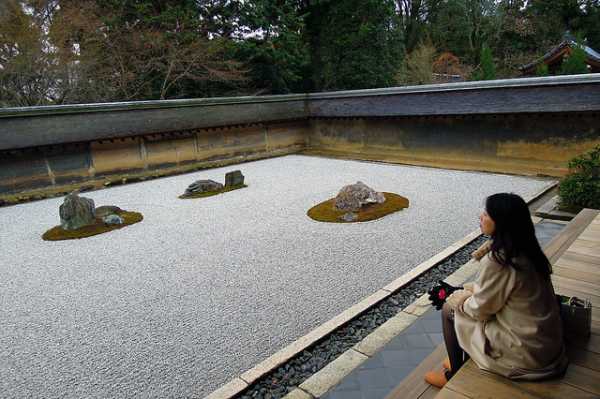
Fifteen stones on its surface are located in such a way that from any point of view it is impossible to see them all at once, only fourteen. Except, of course, the option if you soar over this garden. According to legend, only people who have achieved enlightenment succeed in this. This ingeniously planned "chaos of location" symbolizes a kind of model of the Universe, a metaphor of cognition. In this garden, as in the entire sublunary world, there is always something unknown, unknown, uncounted.
But the main idea for the creator of the garden is to let the visitor enjoy the sight, saturating him with a variety of artistic impressions. But this is only a means, and the goal is much deeper. The rock garden is a microcosm that reflects the macrocosm - the Universe, it should help the visitor to feel the laws of world harmony. And in this, a real rock garden is like any other work of true art.
In addition to the stones themselves, the characteristic elements of thoughtful compositions are artificial mountains, hills, islands, streams, waterfalls, areas of sand or gravel. The beauty of the landscape is formed by trees, shrubs, flowering herbaceous plants. Against this background, stone lanterns, bridges, gazebos, tea houses look harmoniously. Since the 19th century, Japanese gardens have ceased to be the privilege of the nobility, becoming a mass phenomenon, and then spread throughout the world.
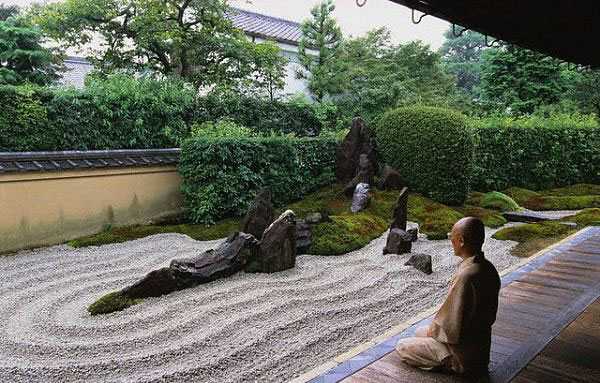
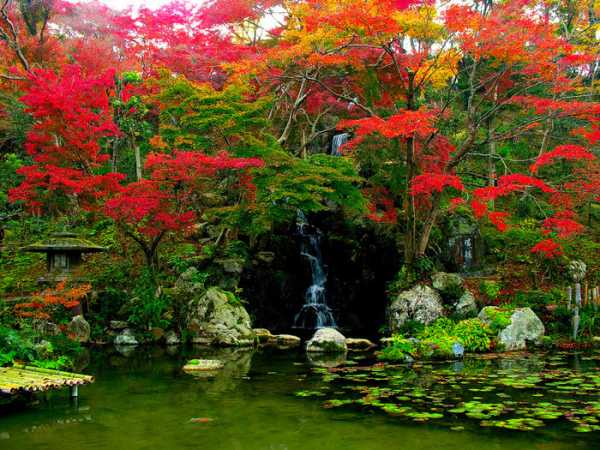
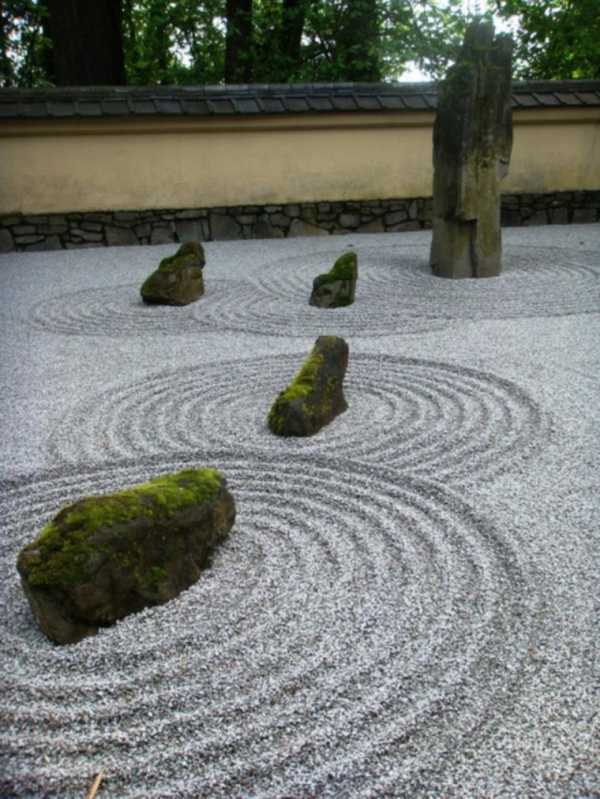

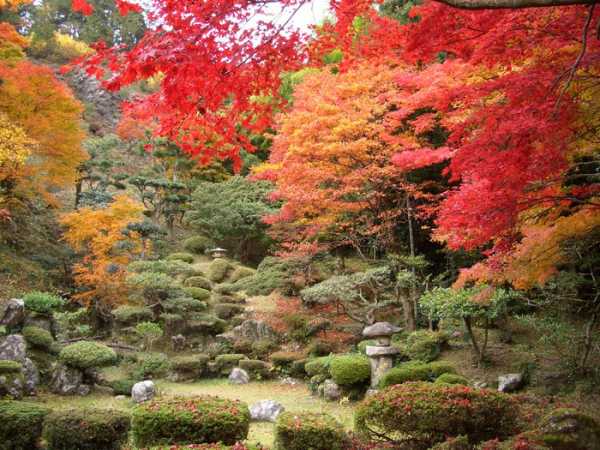

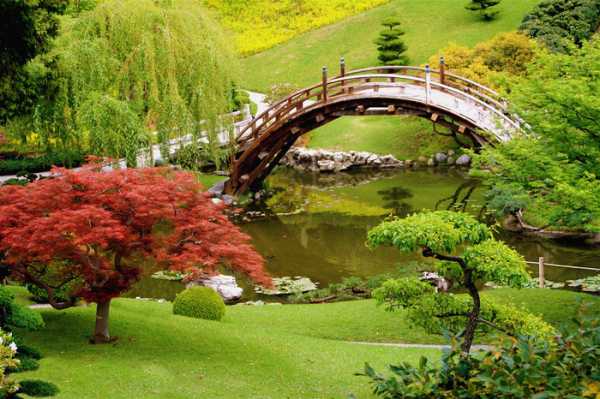
Our people are very impressionable, creative and romantic…. Isn't it wonderful to create a rock garden on six acres?
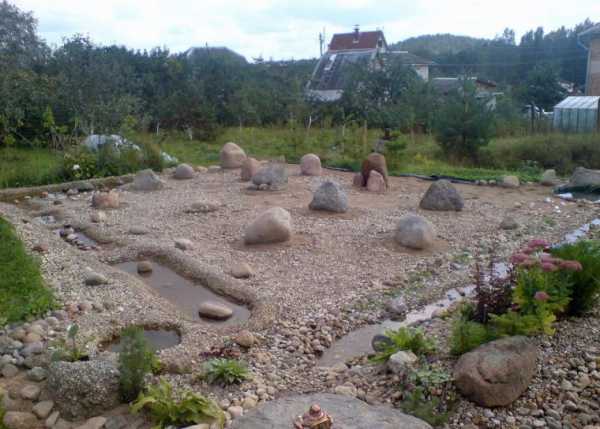
In the magical film about our traditions, "Peculiarities of the National Hunt," to the question: "Where is Kuzmich?"
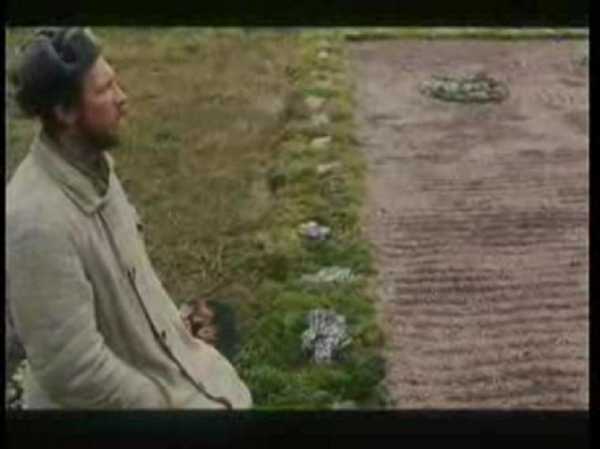
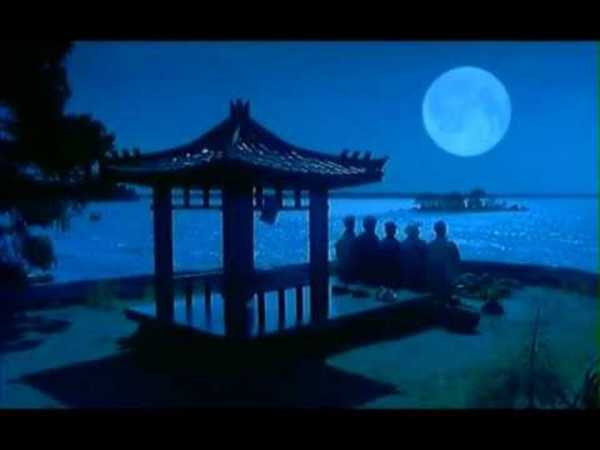
And I want to end the article with photographs of my micro-garden of stones. For its manufacture, stones, sand and pine cones were brought from the southern Crimean regions. Here's what happened:
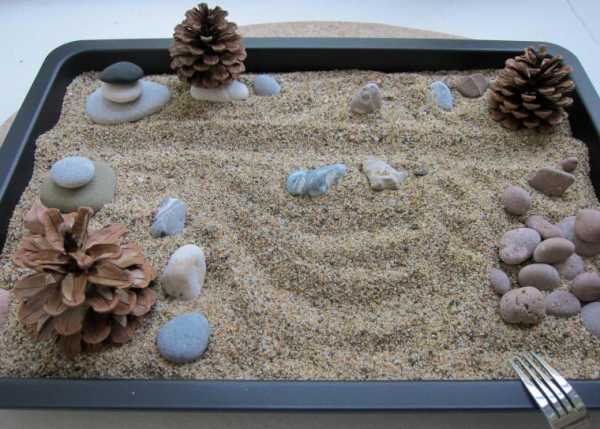
I put this micro-pad at work in the office. In stressful situations, as colleagues say, “to draw on the sand with a fork, to rearrange the stones” helps better than Corvalol and Valerian.
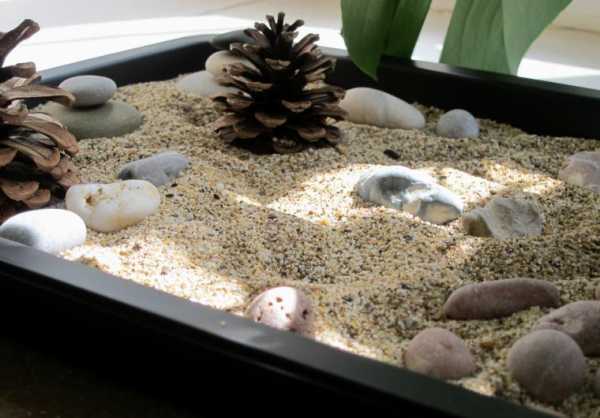
I wish everyone a sunny mood and good luck!

Rules for the preparation of concrete mix to create landscape design elements
For different elements of gardening art, you will need different types of concrete mortar. For example, pouring a continuous path or making garden furniture requires a mortar, but for flower pots and other decorative figures, it can be made easier.
Did you know? In 1917, the first reinforced concrete sea vessel was created — "Namsenfijord". The author of the project — Norwegian engineer Nikolai Fegner. During the years of World War II, the United States launched 24 such ships.
To mix the mortar you will need:
- gloves;
- large capacity - great if it is sufficient for preparing a portion, which is enough for exactly 1 product (1 tile for the path, 1 rack for the garden bench, etc.);
- stirring tool - a construction mixer, it can be replaced by a drill with a special attachment;
- small shovel;
- bucket;
- putty knife.
| Components of concrete mortar: |
|
| Proportion (number of parts): |
|
| 1 m³ of concrete mix is: |
|
Each component in the composition of the solution is responsible for some of its specific quality. By changing its amount, you get a mixture with other properties. For example, the lower the quality and purity of the sand, the more potholes will form on the finished product. For the construction of the foundation of a house, this is unacceptable, but it will add zest to the texture of a finished flowerpot or turtle for a flower bed.
Important! It is not recommended to use a bucket as a unit of measure, as materials have different volumes, so use a scale.
Concrete preparation rules:
- If you notice lumps in the cement, then it must be sieved before use.
- Do not use expired cement or dirty rubble. From what the finished concrete product will crack.
- Place the components in a mixing container in thin layers. This will help to mix them better. The total height of the "cake" will be about 25 cm, if more, then you need to apply additional effort when stirring.
- Add water slowly, in parts, to well-mixed dry ingredients. Don't forget about the temperature of the liquid. It should be the same as the environment i.e. in summer about + 30 ° С. It can only be heated in winter (up to + 50 ° C).
- Prepare the mixture just before use.
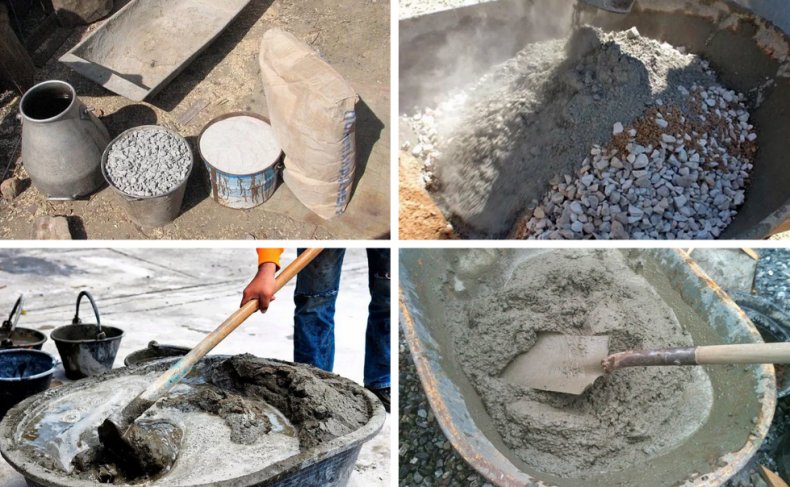
For garden crafts - pots, leaves, etc. vermiculite can be used instead of sand. This will reduce the weight of the finished structure.Other added ingredients such as perlite, gravel or pebbles are used to create a rocky texture and tighter adhesion between the mortar components.
DIY decorative stone for the garden ↑
It is best to use natural stones as decorative stones for the garden, but if it is difficult to find them in your area, do not despair. Watch the video how you can build an artificial decorative stone that imitates a boulder from scrap materials.
A ready-made form can be used as a "stone" frame. It is no less interesting to make it yourself from cardboard, crumpled plastic bottles, or, as in the video, foam plastic from the packaging from the TV
It is important that the shape of the frame resembles the shape of a natural stone. The solution must be made with a thick consistency.
For 1 part of Portland cement, we take 2 parts of sand. The resulting solution should be applied over the entire surface of the future stone. The wall thickness is 2 centimeters. To harden, cover the mold with foil and leave it alone for 24 hours. Composition for painting a stone: 1 tablespoon of coloring pigment + a glass of cement. The mixture is poured with water until a jelly-like state. After painting, the stone can be lightly powdered with sand. You can also use paint on concrete from a store. After the final hardening of concrete and paint on the form, the "insides" of the frame can be removed and used to make other stones.
That, perhaps, is all for today. Finally, a small gift. Admire the beautiful rock garden at the paleontological site of the Humanities Institute in Volzhsky, Volgograd Region, and take on ideas for a vibrant rock garden.
History of stone gardens
In the Japanese garden, cobblestones of various sizes and shapes symbolize mountains. They were first used in the 14th century. Monk and master of garden decoration Muso Soseki became the progenitor of unique compositions. Scattered stones on the ground in a certain order symbolize resistance to adversity, long life, since they remain unchanged for centuries. Previously, they were created only at temples and monasteries, and their main purpose was only to provide aesthetic pleasure.

According to legend, one sailor saved a turtle from death. And she, as a token of gratitude, showed him one of the five islands where the immortals lived. Since then, people began to decorate their plots with rocky decor according to certain rules. The elements themselves must be strictly odd, and their number can only be a multiple of three or five.
Rock garden
This type of garden decor, which is quite popular today, looks like an original rocky lawn and is a great place to relax. Also, with the help of a rock garden, you can hide the flaws in the relief and even divide the site into functional zones.

Large stones serve as the basis for this decor; gravel is used as backfill. The fundamental principle is the following - the whole composition is oriented around a single point of contemplation. Most often it is located on the north side.

Also, when creating a rocky garden, you need to maintain a contrast between filled and empty areas. In addition, it is necessary to observe asymmetry and the principle of an odd number of elements.
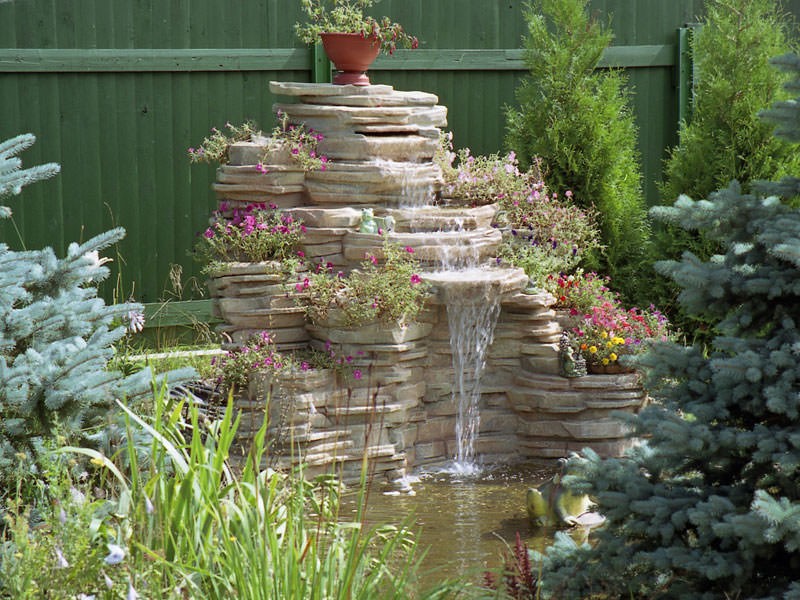
Varieties of garden stone decorations
A fairly common decorative element is a stone spiral. It is quite simple to make it - flat stones must be placed on the lawn in the form of a spiral. Such a decoration can also be placed in front of the facade of the cottage - it will look wonderful.

Do you have a lot of small multi-colored rubble? Use a stone for tracks in the country... They will not accumulate water, which means that ice will not form in autumn and winter. And if you lay out the pebbles in the form of a patterned ornament, you get not a path, but a dream. Pebbles can be selected not only in color and size, but also in shape.

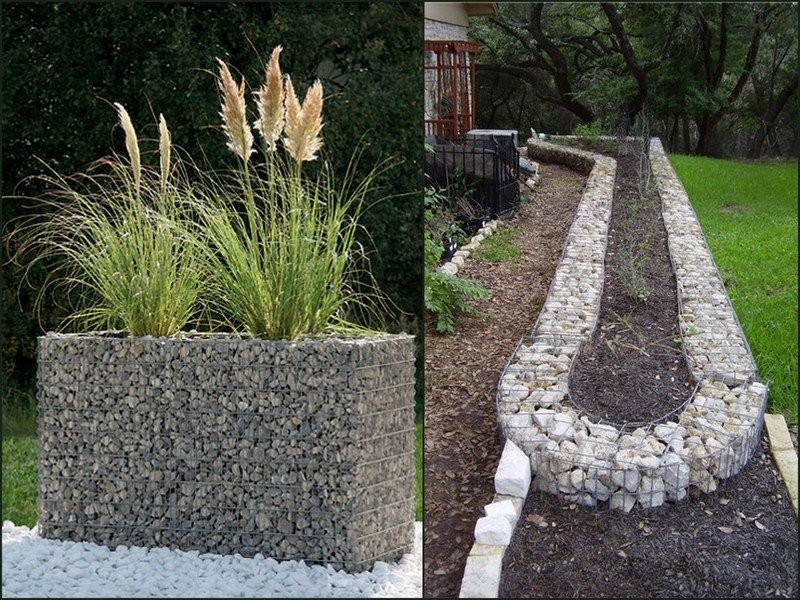
A slide with stones in the country is already a classic. There is little that can be compared with its picturesqueness. Are you tired of a boring lawn? Dilute it with a stone composition of rubble of different shades.

A flower bed made of stones is rightfully considered to be a traditional decoration of the dacha. Even a housewife can do it - you just need to buy cement and pick up stones. A flower garden like this will decorate any lawn.

From stones, using mosaic technique, you can make such a decorative element as a non-fading carpet. It will look especially perfect at the gate.

In addition, stones are used to create decorative retaining walls, decorate garden stairs, as original lawns. Sculptures collected from pebbles are considered a special delight. Hewn stone is used for cladding terraces and creating whole stone corners in the garden. You can also create a magnificent rockery out of stone or lay out a beautiful alpine slide.

Advantages and disadvantages of concrete
Concrete is inexpensive, easy to use, durable and practical, suitable for a variety of garden projects, from walkways and steps to decorative balls and fancy shapes. Like any material, it has its own pros and cons:
| Advantages | disadvantages |
|
|
Variety of plants
The choice of the floral part of the composition is especially approached. A variety of plants need to take root together. When choosing them for planting, you need to take into account how much they love the sun, are sensitive to shade, and unpretentious.
Succulents and cacti are ideal, they look great and take root easily. Of the succulents, the most suitable are:
- echeveria;
- sedum;
- stone rose;
- sedum;
- abromethella;
- pachypodium;
- diamond dealer;
- lithops.
Succulents alternate with small ornamental plants, they should harmoniously fit into the structure of a tiny garden. The best are:
- salturomy;
- saxifrage;
- glexin;
- nertera;
- tradescantia;
- miniature ivy;
- pachyphytum;
- dwarf ficus;
- sphagnum moss.
When planting, take into account that succulents and cacti love bright sun.
Creative stone rugs
Stones carry a special energy, they have been used as a treatment for a long time.

You can put a rug of tightly glued stones in a certain pattern in front of the front door. For example, in the form of a wave or a spiral, where stones are glued in large sizes along the edges, gradually decreasing towards the center.

For those who love humor and creativity, you can create a rug that can only be stepped on with bare feet. Stone rugs are great foot massagers. The feet may look in different directions.

Pick up a large oval stone - a foot, 5 small ones to it (imitation of toes). Different sizes of children's feet, simply glued to a wooden surface, are very effective.

DIY original flower beds
Are you not a sculptor at all? But believe me, you can make these original flower containers.
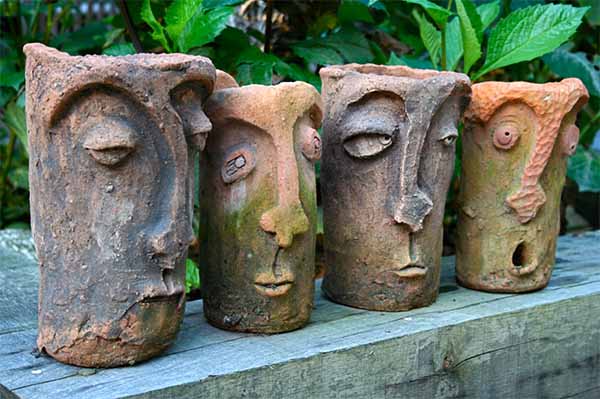
We need a plastic container, foam, reinforcing mesh. We make a cement mortar by adding a spoonful of gypsum directly to the palm with the mortar and this is how we form our "sculpture"
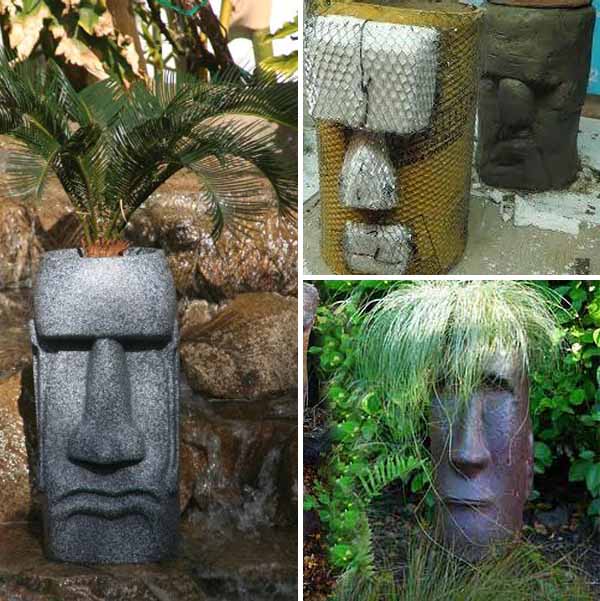
But not all of us are fans of modern abstract art. You can easily make garden crafts in a classic style.
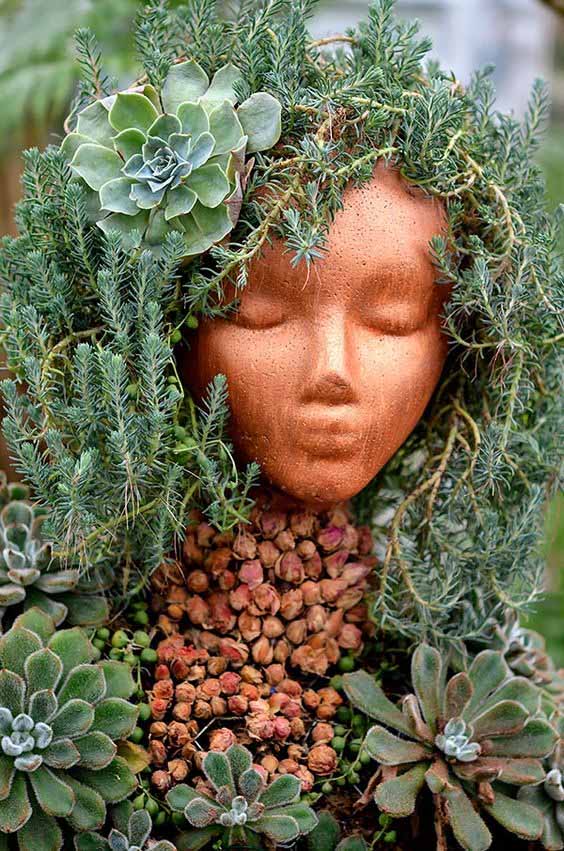
But since you are not a sculptor yet, you need a template - it could very well be an old doll.

Because it will not be just a decorative garden figurine, but a flower garden in the form of a girl's head, then the upper part must be cut off.
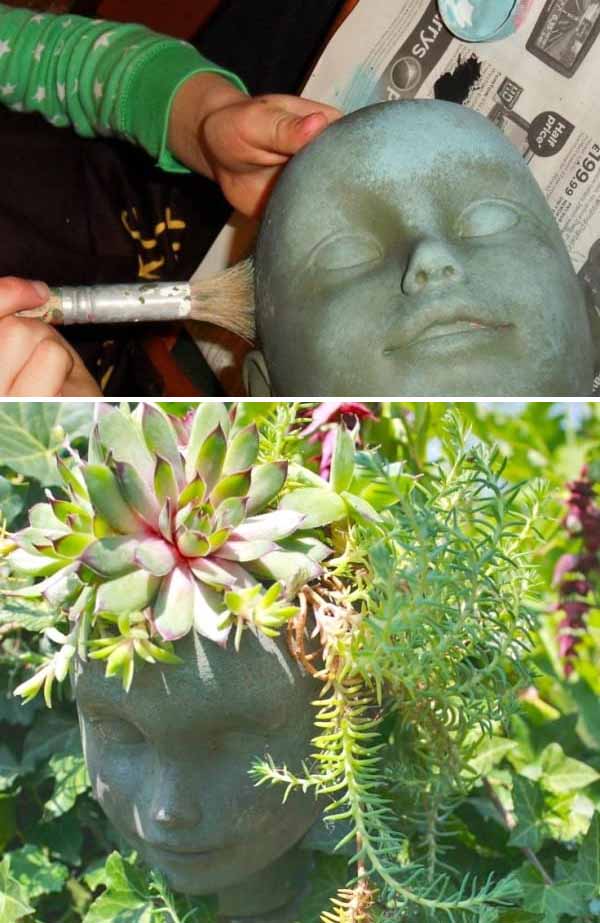
Then the head is painted. In order to give the texture, the template is painted first with a dark gray paint. Allow to dry and apply a layer of lighter paint.After drying, a layer of even lighter paint is applied with light strokes.
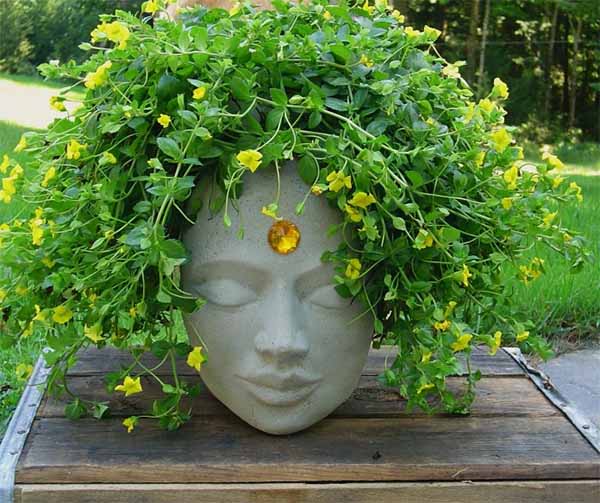
This is a very simple process, and all the examples of this style that you see in the article were made by teenagers in a labor lesson.
